Some years back, Chiang Mai first appeared on our bucket list because of elephants. Hanging out with these giant creatures was central to our cancelled 2020 trip, and then central to this trip. This dream came true on day 8.
There were no fewer than half a dozen elephant “sanctuaries” roughly an hour away either directly north or southwest of Chiang Mai. We booked a full-day tour with Elephant Freedom Project. A van picked us up from the hotel promptly at 8, stopped at two more hotels, before driving southwest to an area called Mae Wang.

In the van with us were four other Americans: one dude native to San Francisco and now lived in New York, and three gals from West Virginia. After breaking the initial awkward silence, we bonded over our common backgrounds in geography. Those three girls had particular interesting stories to tell, being school teachers back home and having just completed a summer of English teaching program in Thailand.
Making those friends was helpful in passing time. Even though we arrived at camp by 9:30, the tour did not start until 10:30 because a second group of participants took their sweet time to get there. We met our guide, changed into traditional Karen tribe clothing, and played with the resident dog.
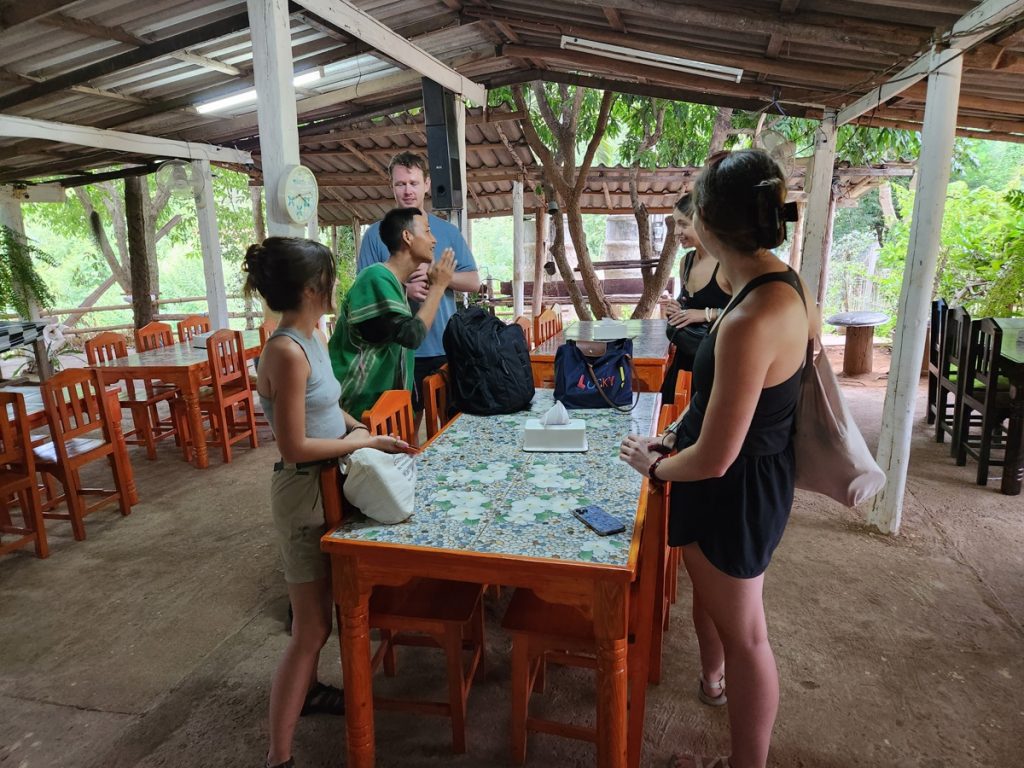
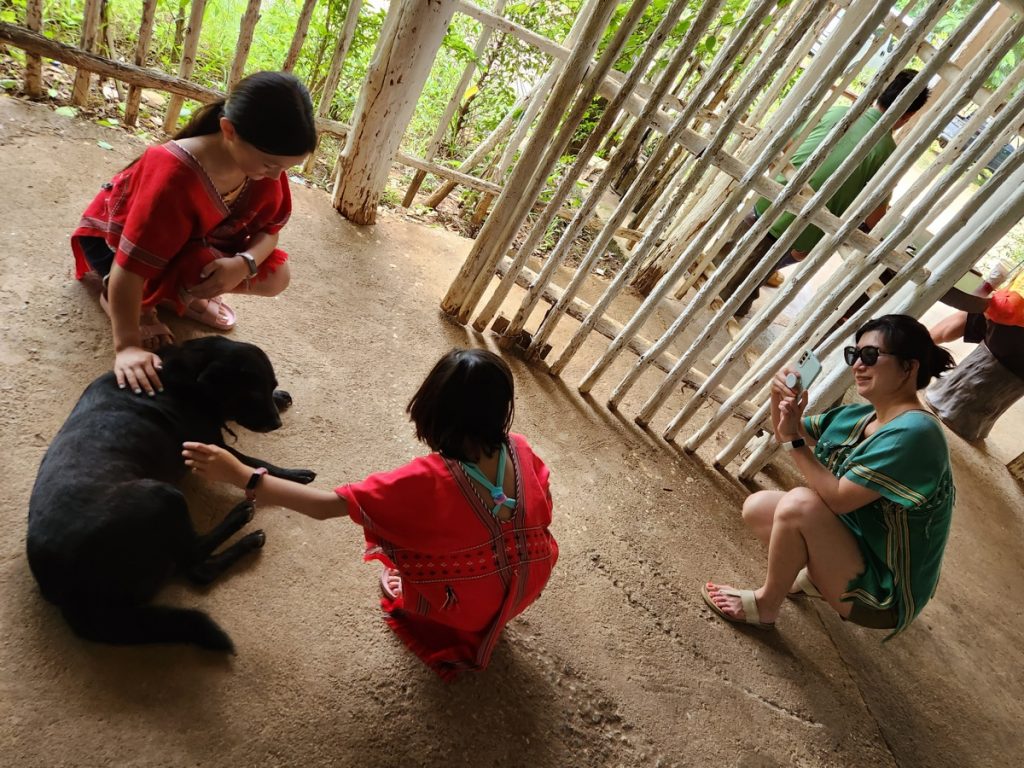
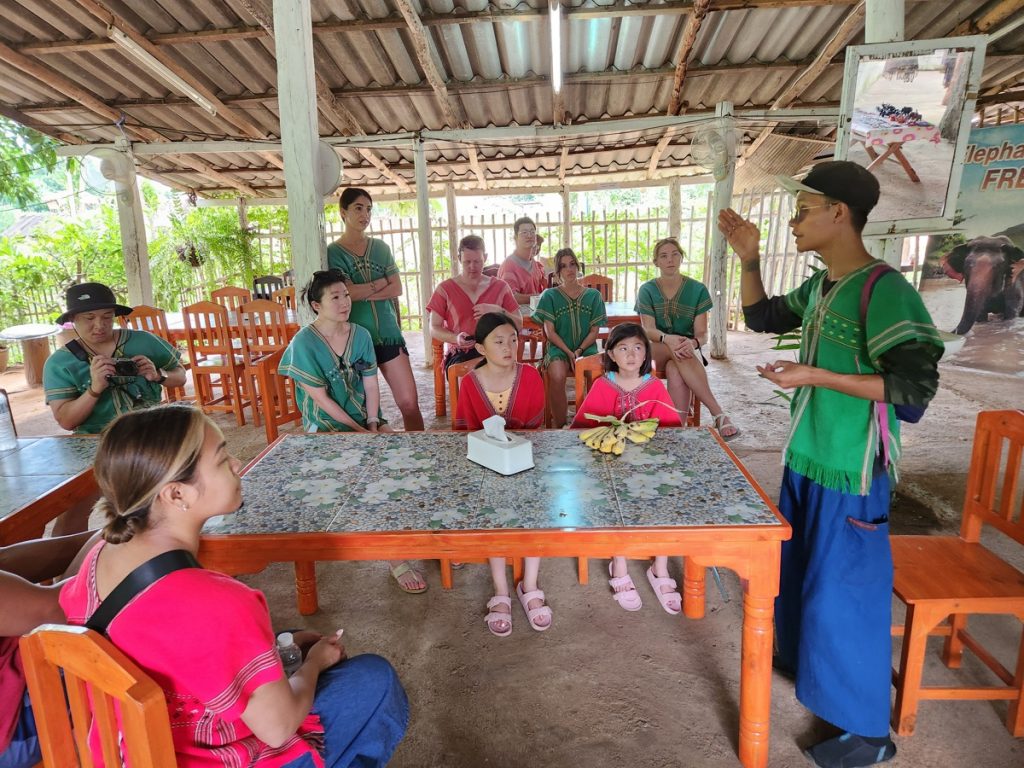
Breakfast
The first thing we really did as part of this tour was chopping sugarcane. It was incredibly satisfying, and I’d spend more time on it if we weren’t moving on to feed it to elephants.

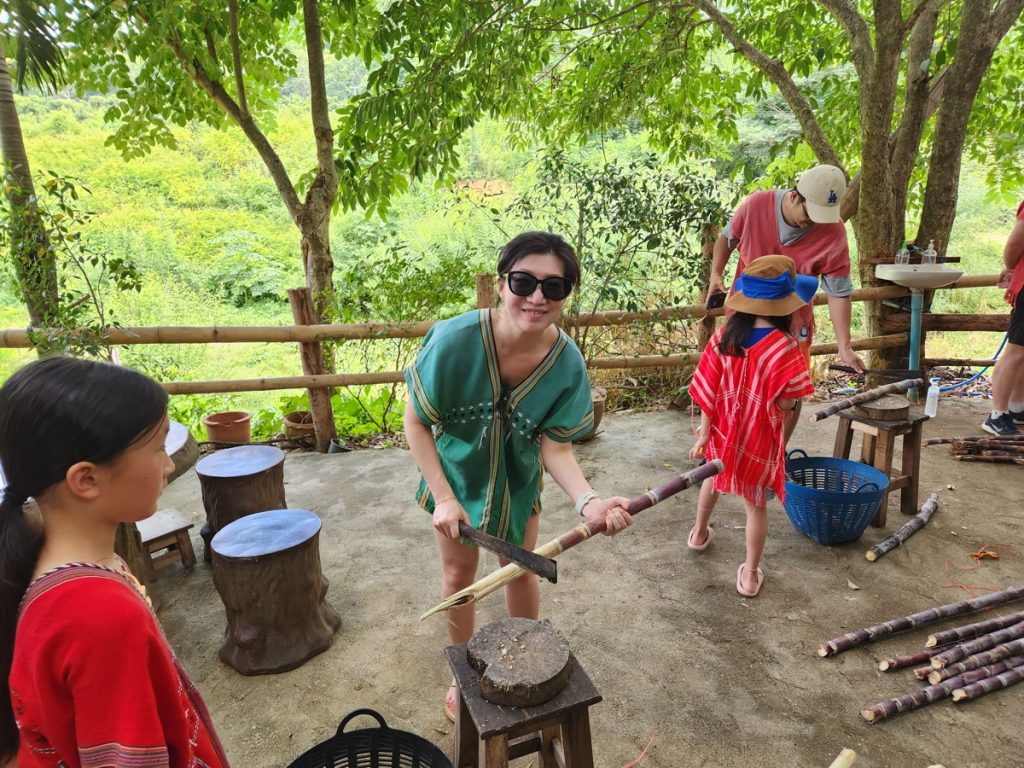
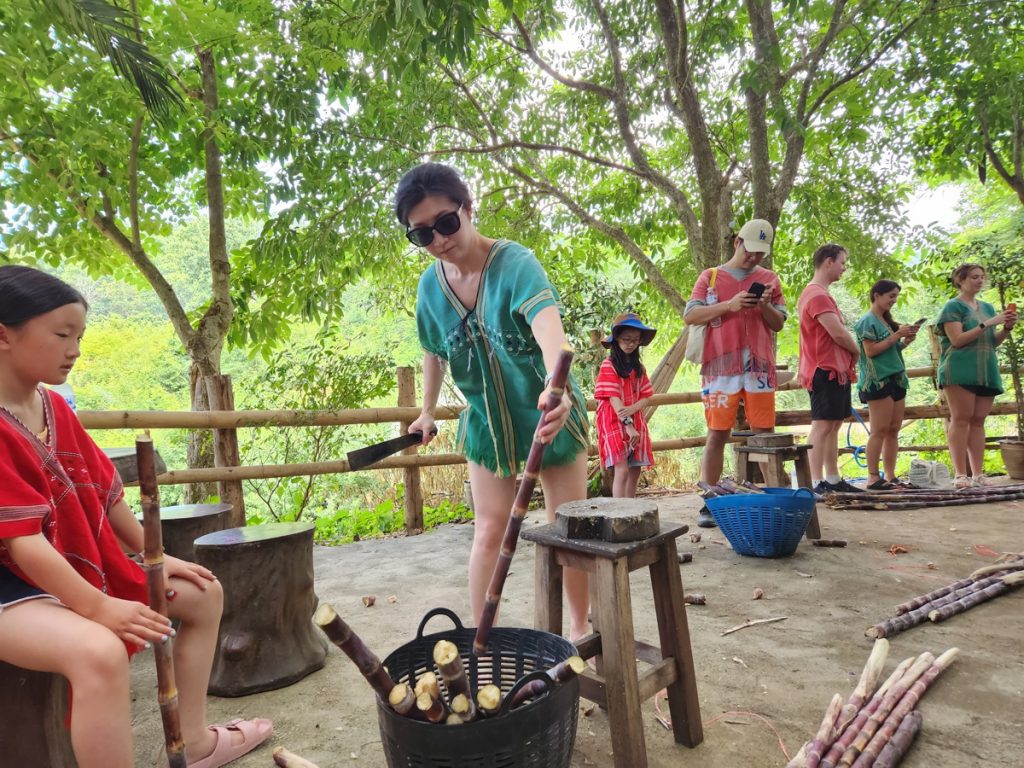
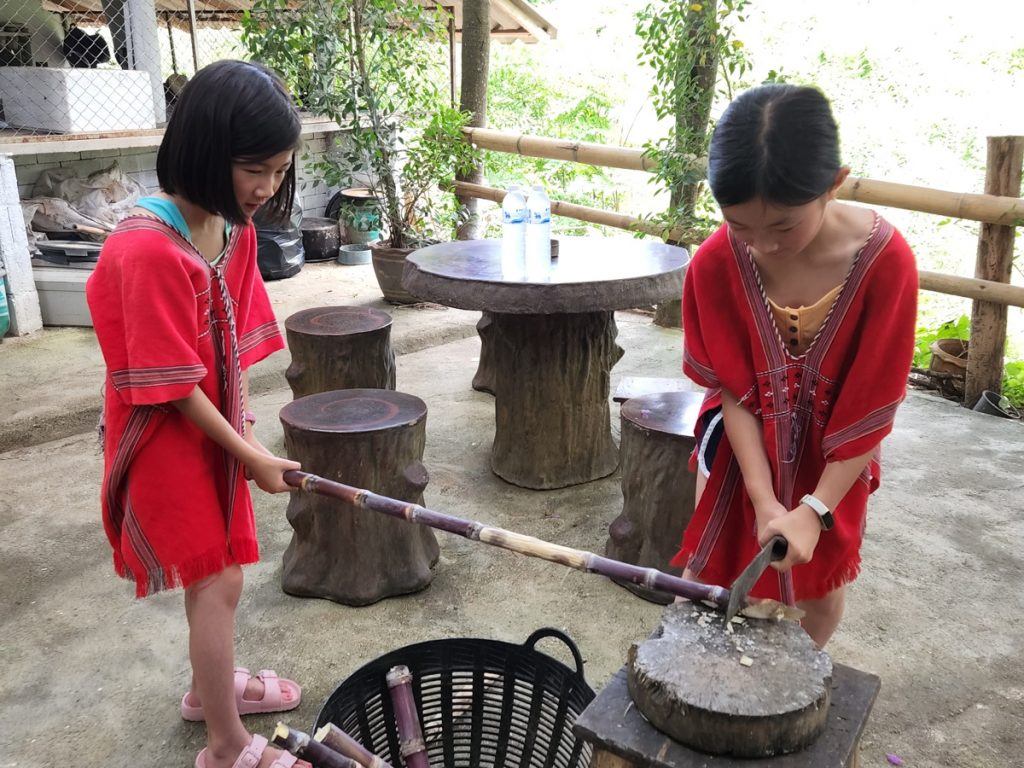

The guide introduced us to the family of six elephants at the camp – a grandma, three other adult females, and two girls aged 5 and 3. They were chilling in an area separated by a basic fence, and gathered when they knew it was breakfast time. We fed them bananas first, and then sugarcane. They’d gently reach forward to grab the food with their trunks, or we could say “bon bon” to an elephant and she’d let us put the food straight in her mouth. Coming in direct physical contact with these giants was unbelievable. Their movements were so gentle, even when one adult grabbed three bananas out of my hand at the same time. Feeding them felt safer than feeding monkeys, kangaroos, and parrots.
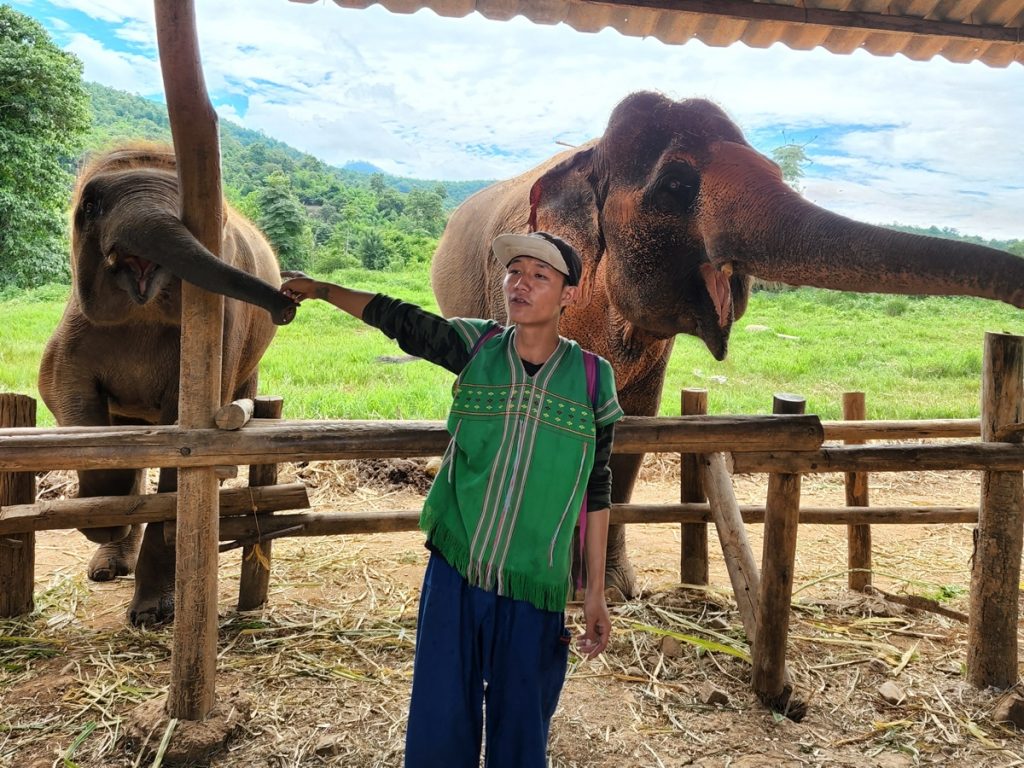
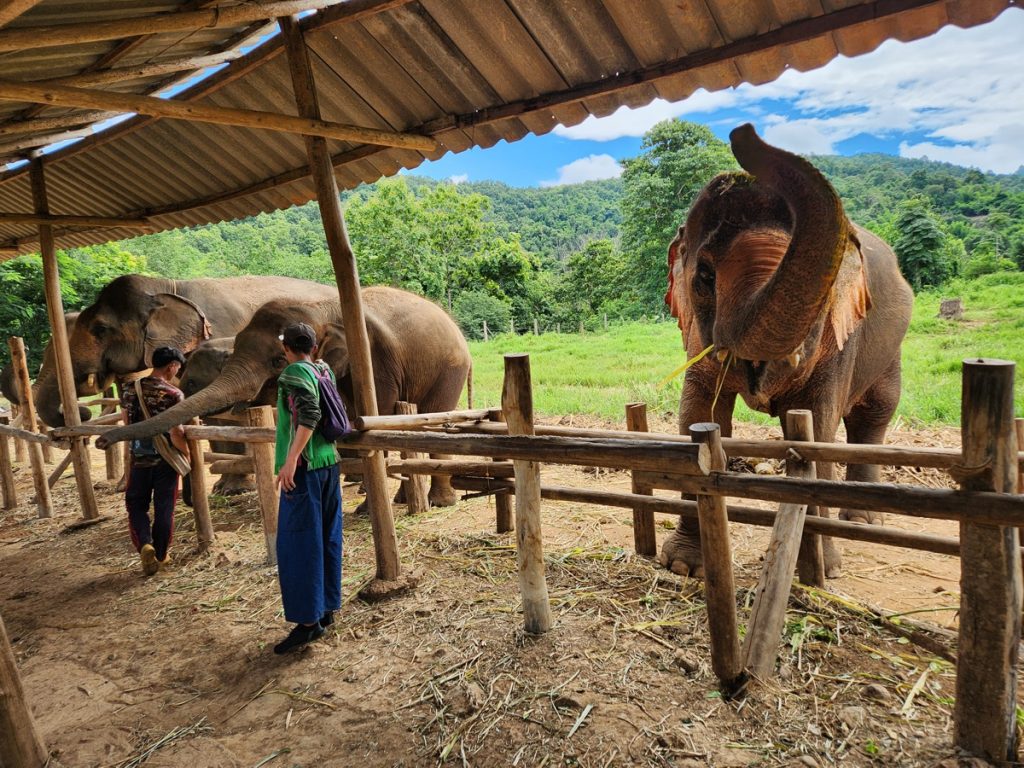
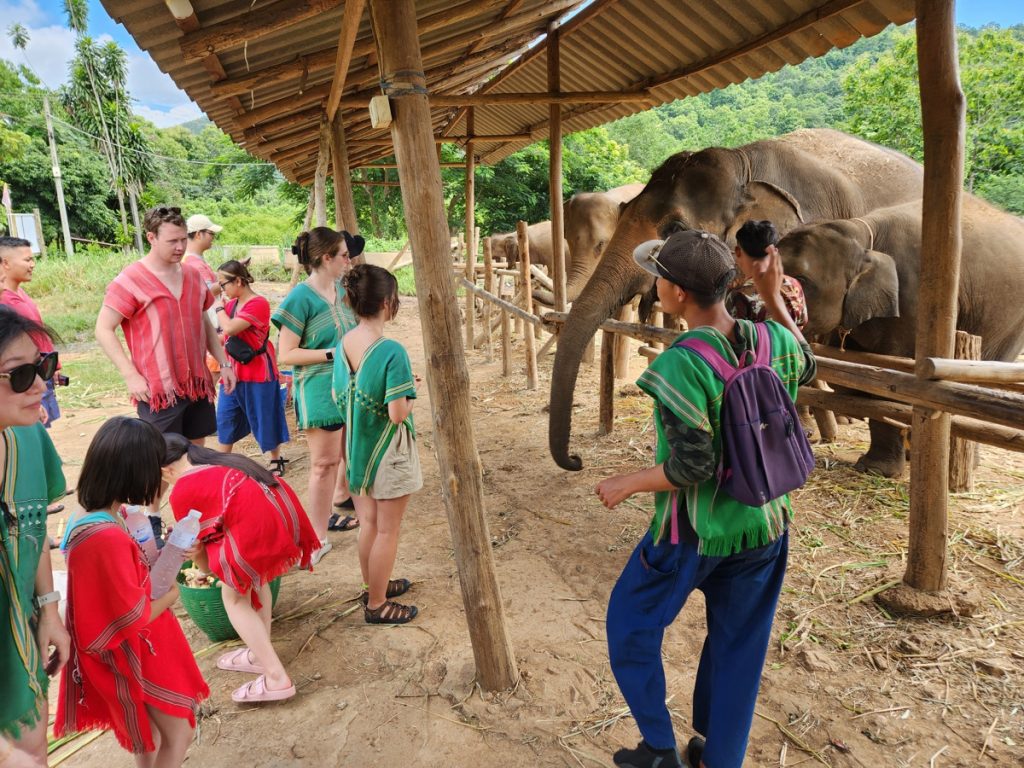
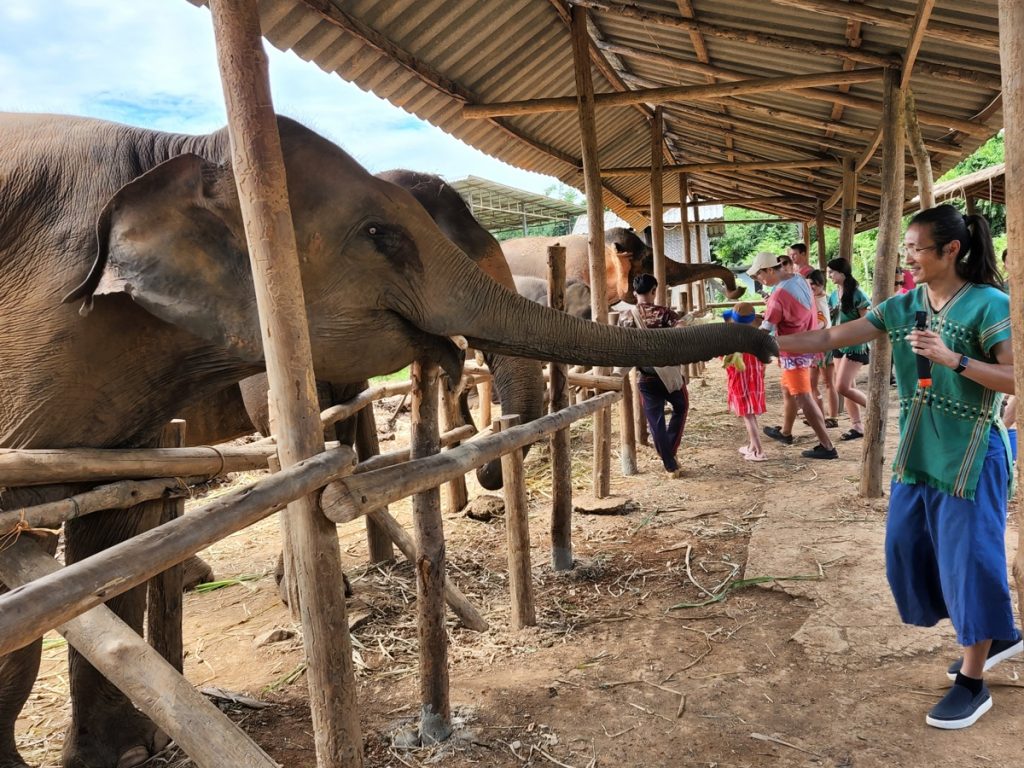
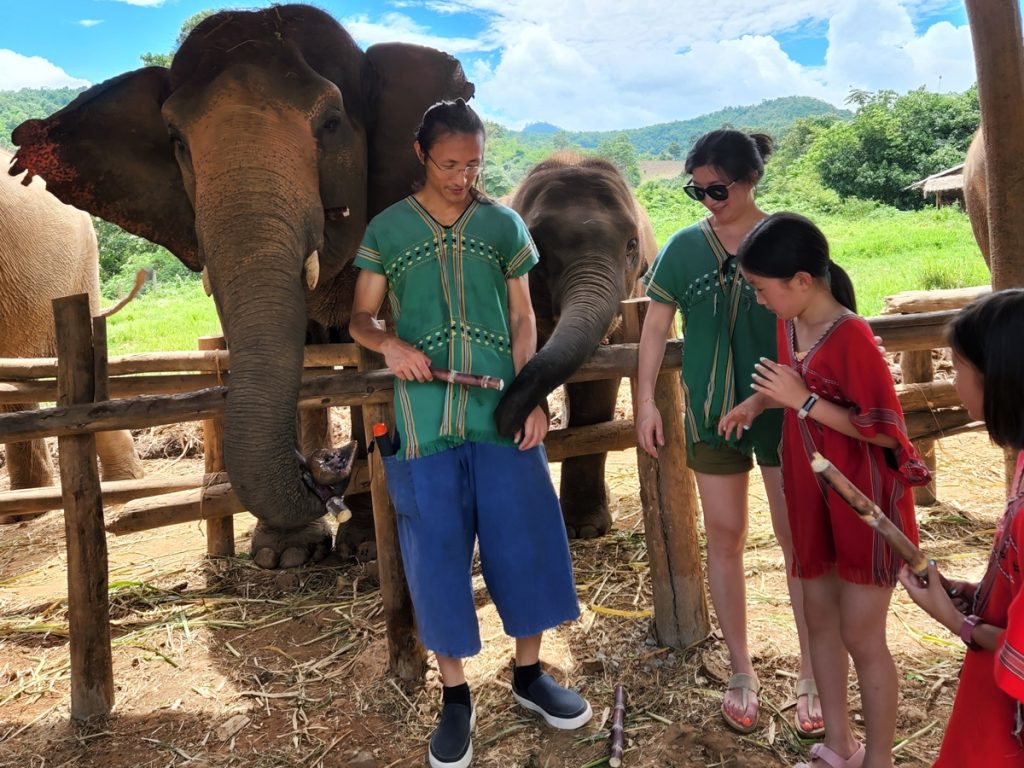
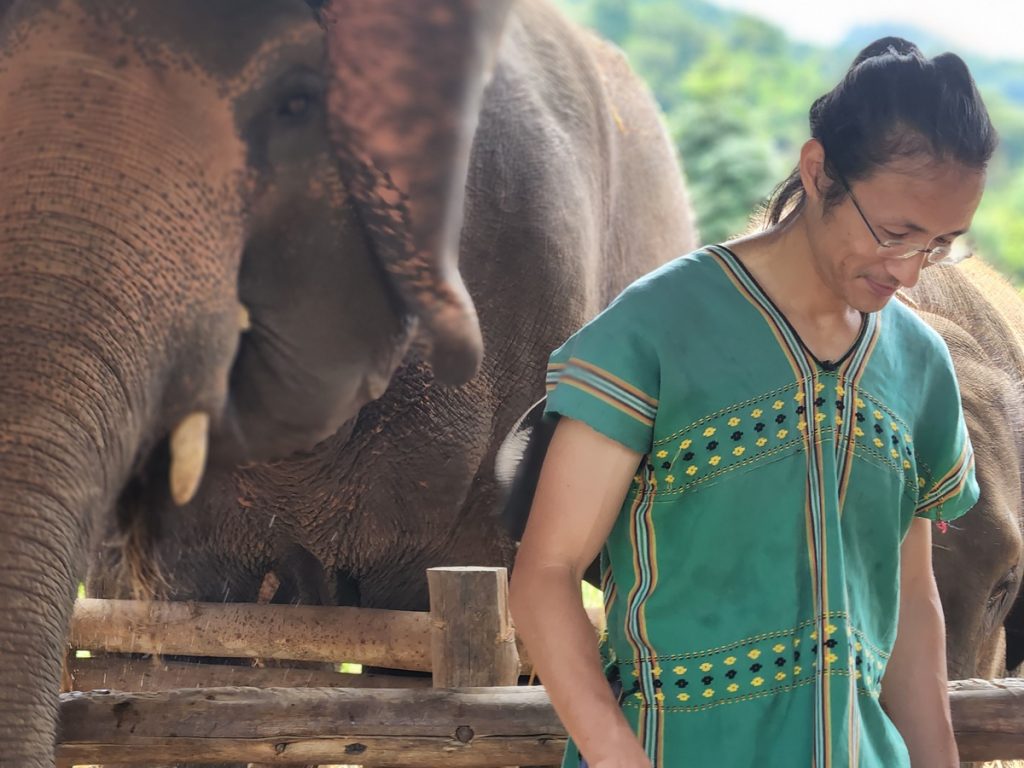

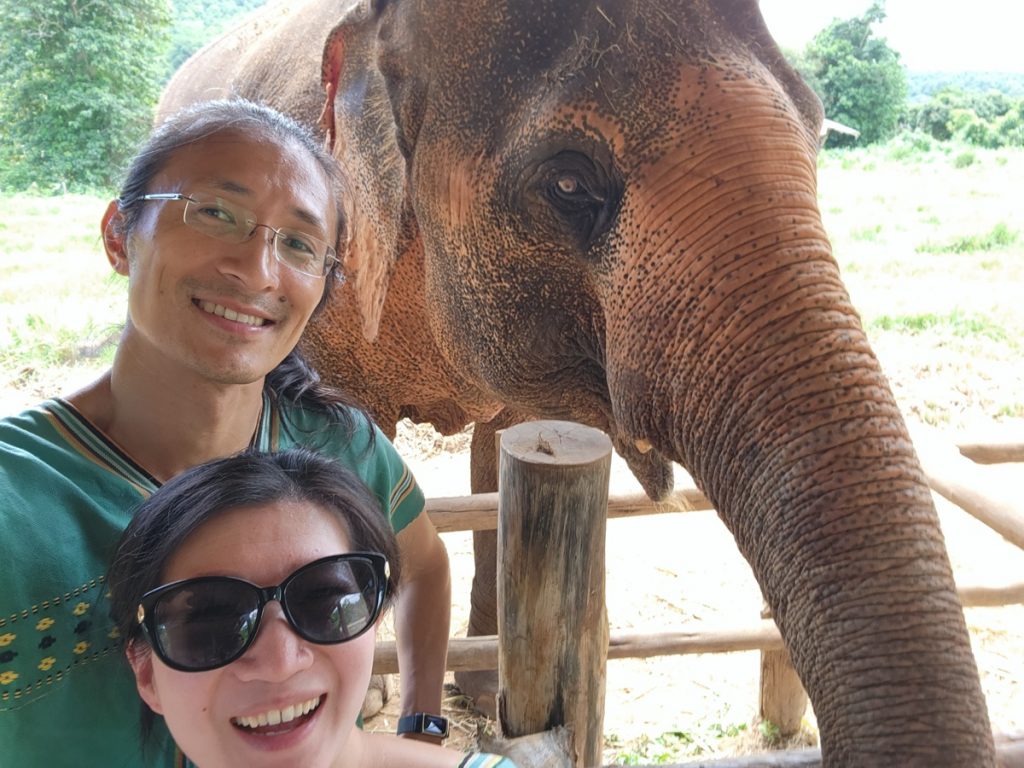
Those trunks were incredible. The skin was dry, thick, and rough, but they were capable of fine motor movements. They’d often hold onto the first banana we gave them and gesture for more, in a way not unlike human hand gesture for begging. When we did oblige, they were capable of individually receiving the second and third. An elephant trunk may appear like a single finger, but it could perform tasks equivalent to at least two human hands!
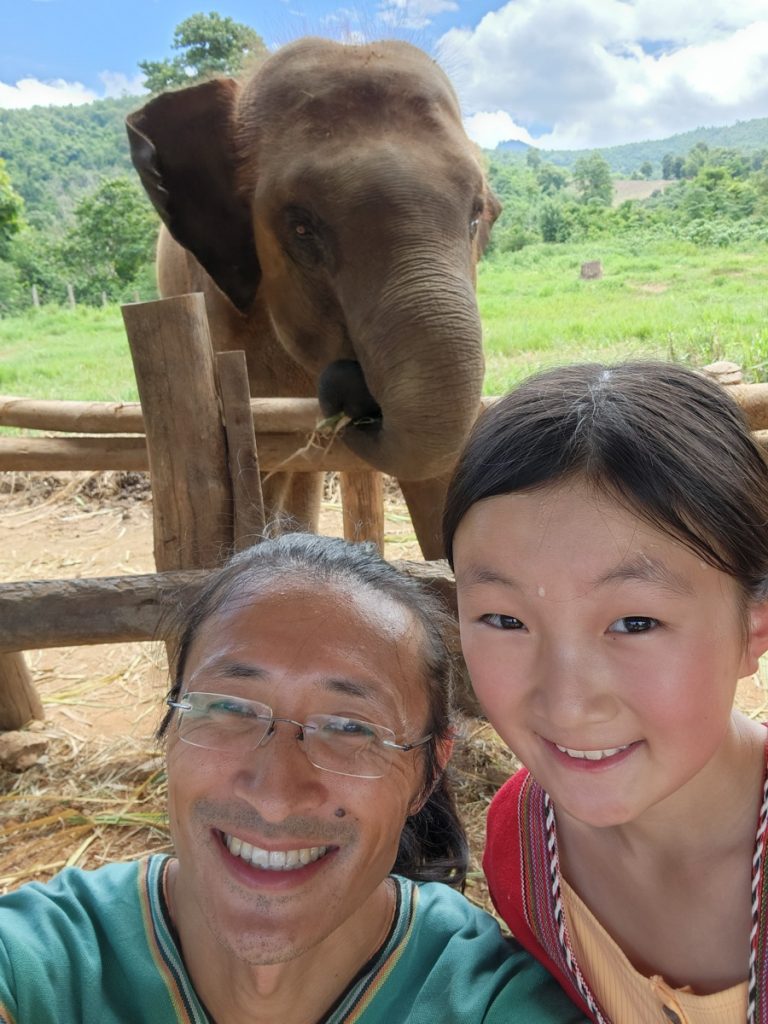
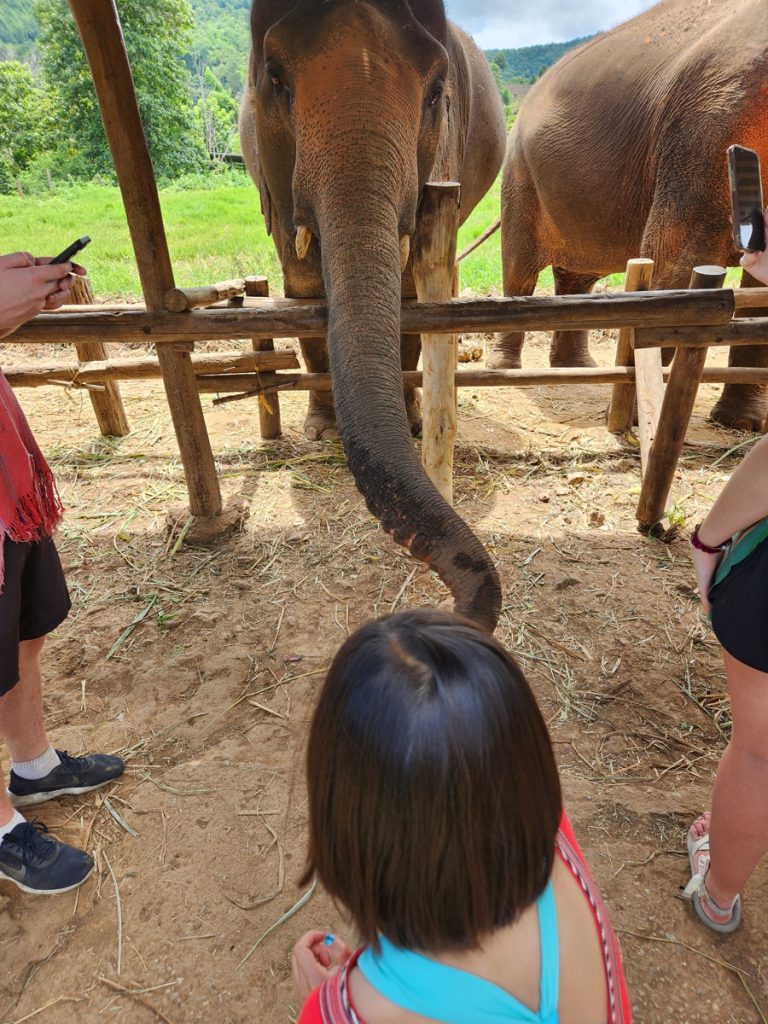
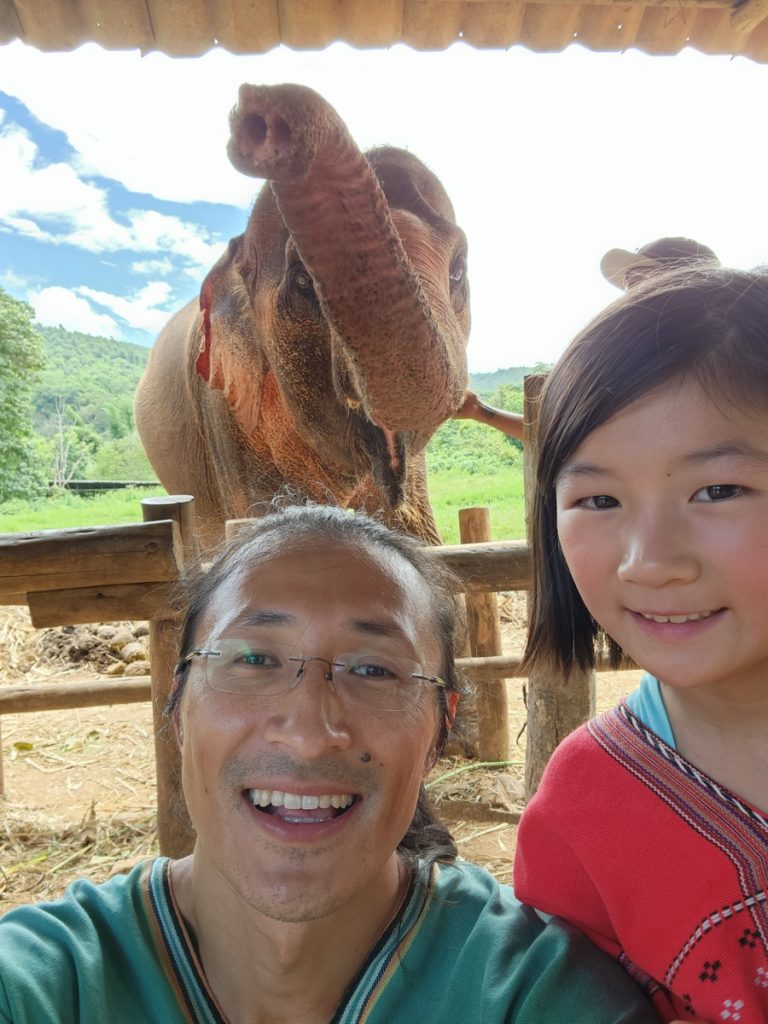
Morning Walk
Shortly after breakfast, we went on a short hike to the nearby hill. The elephants knew this routine and came along without any leash or visible directive, though a few trainers were present at all times. They spent some time taking a mud bath (for sun and insect protection), before moving on to independently eat their way through the patches of foliage and tall grass.


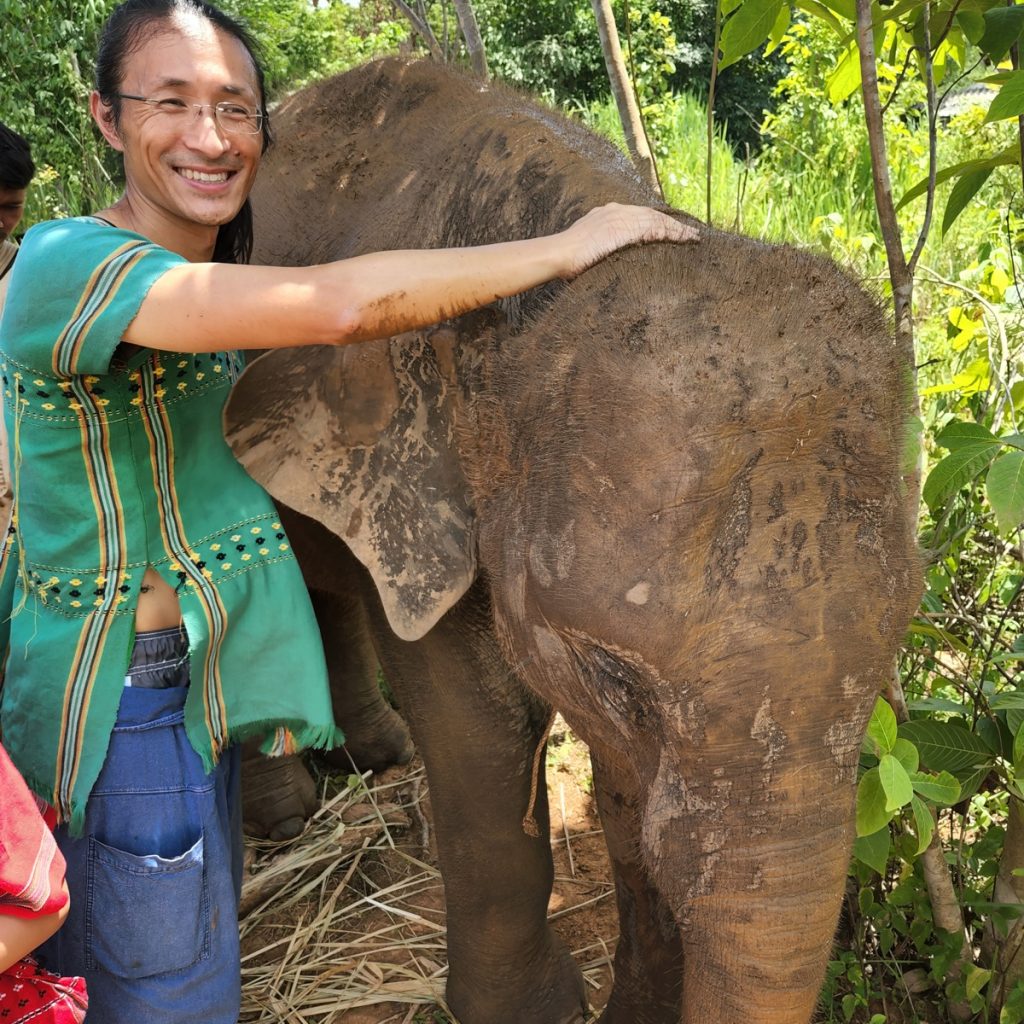
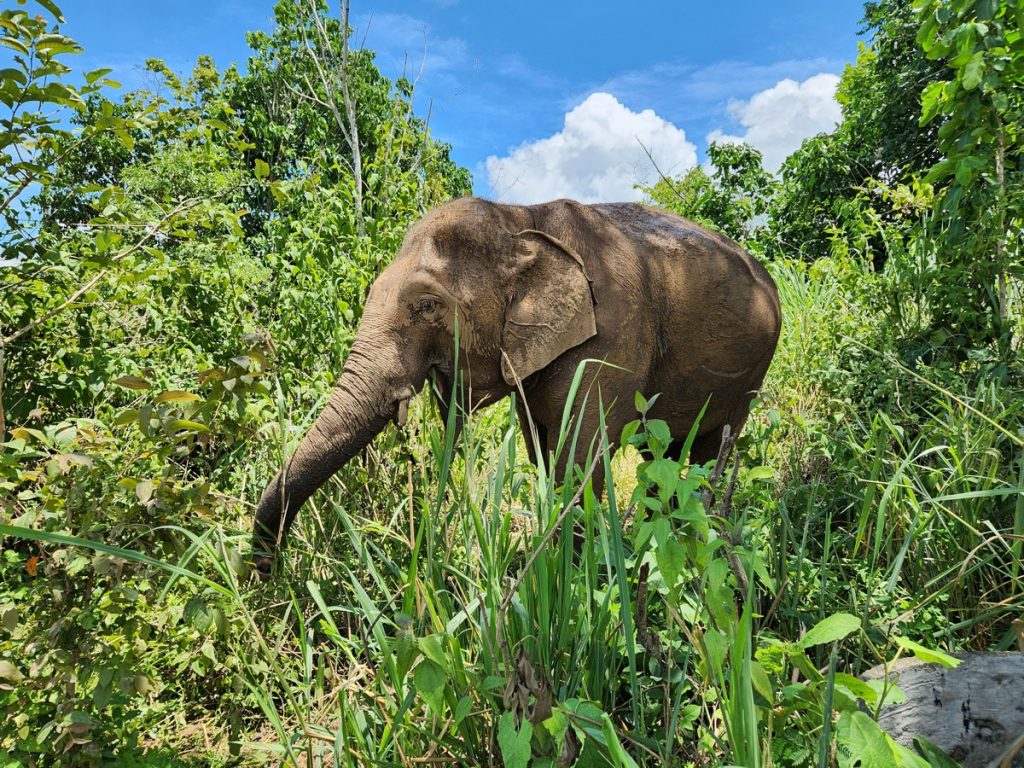
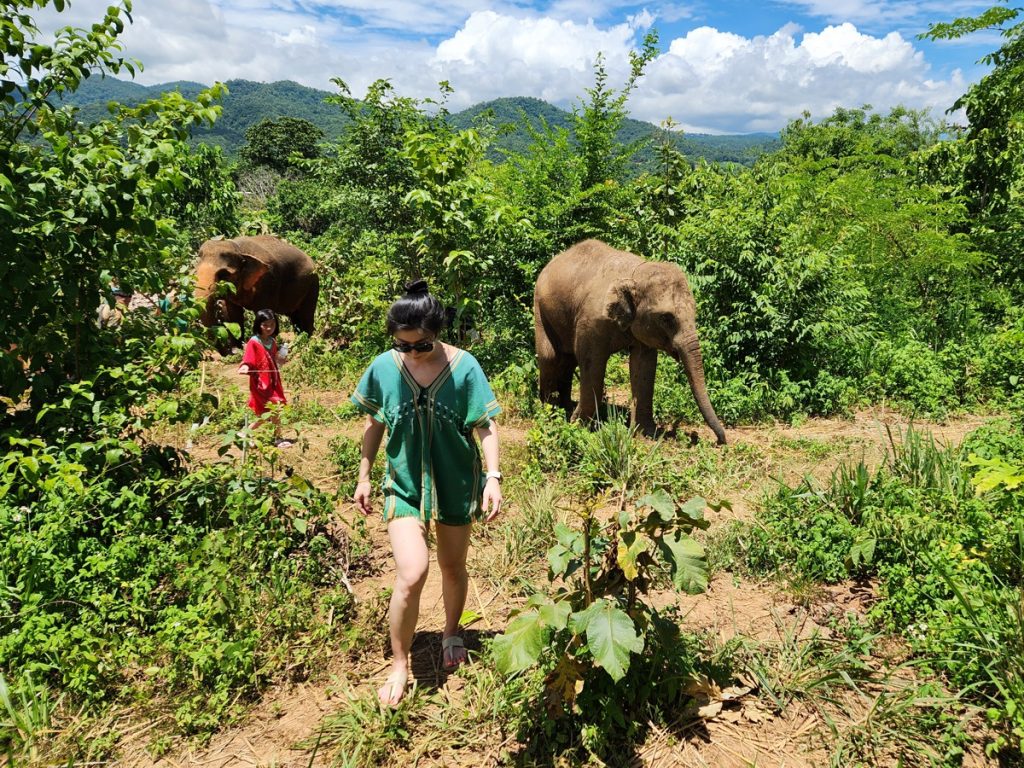
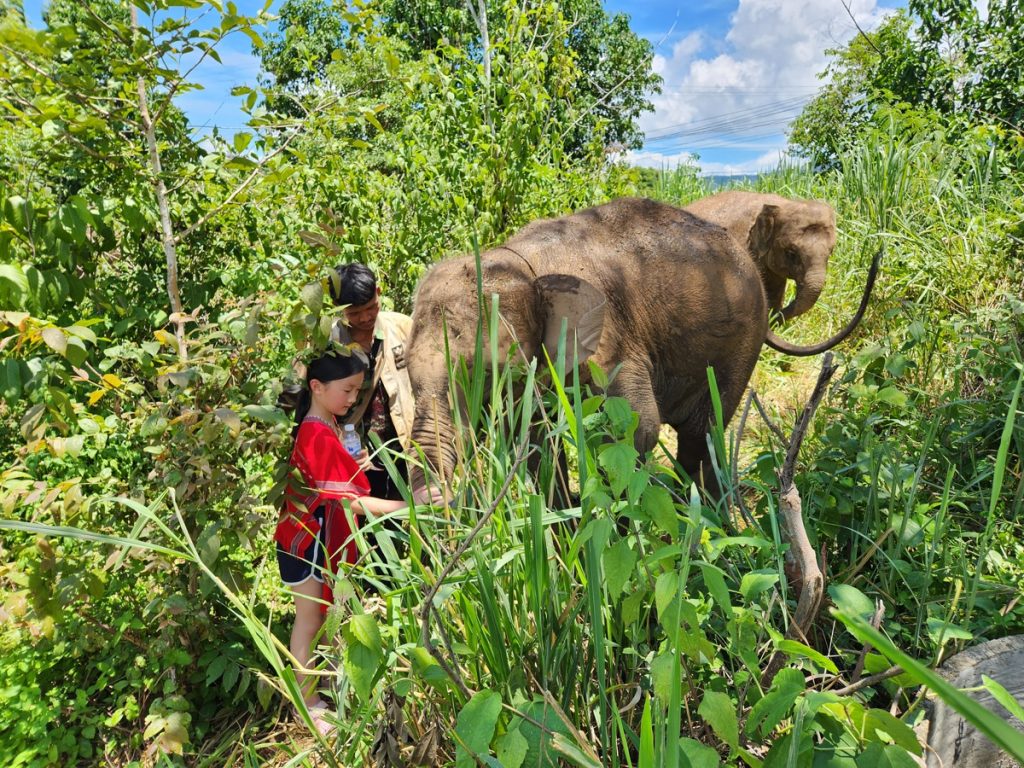
We were free to do whatever during this half-hour session: gather around the guide to hear his infinite facts about elephants, or stalk any member of the herd to see what she was up to. The adults were rather intimidating so I hung out mainly with the little ones.
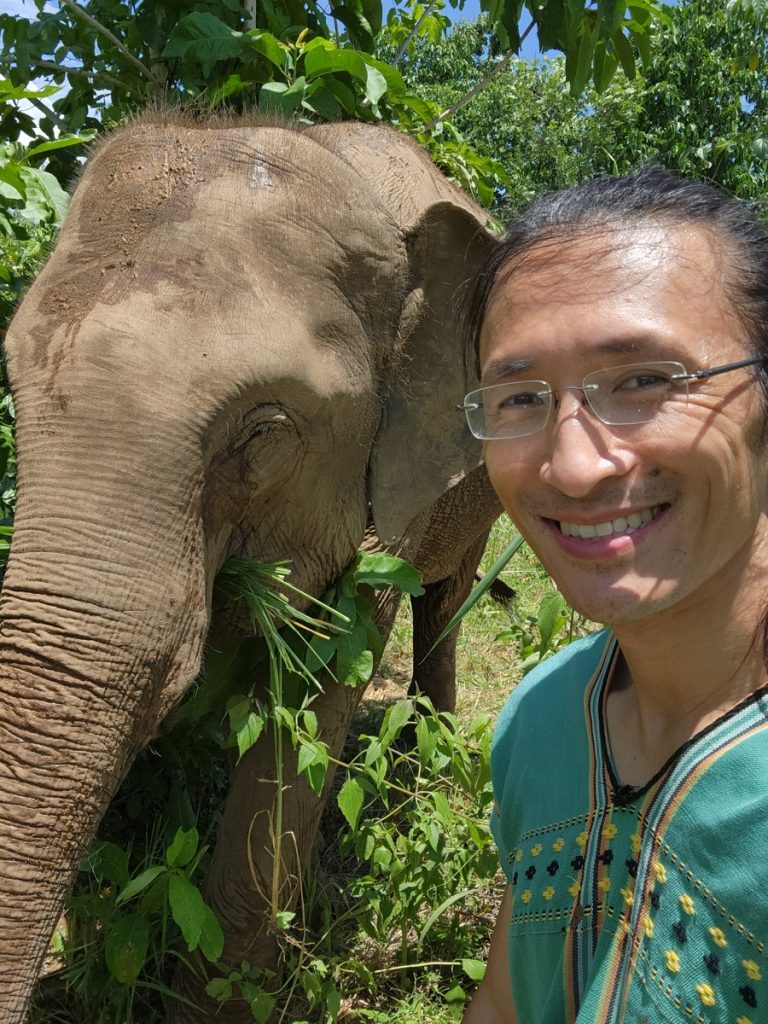
Lunch (for the people)
Between 12 and 1 was the lunch break. The camp prepared a fairly basic buffet consisting of pad thai, fried rice, clear soup, and watermelon. It was quite tasty, and I was surprised to find myself going for seconds on the hot soup in the middle of a hot day. The kids had ice cream from the freezer, which was subject to payment based on an honor system.
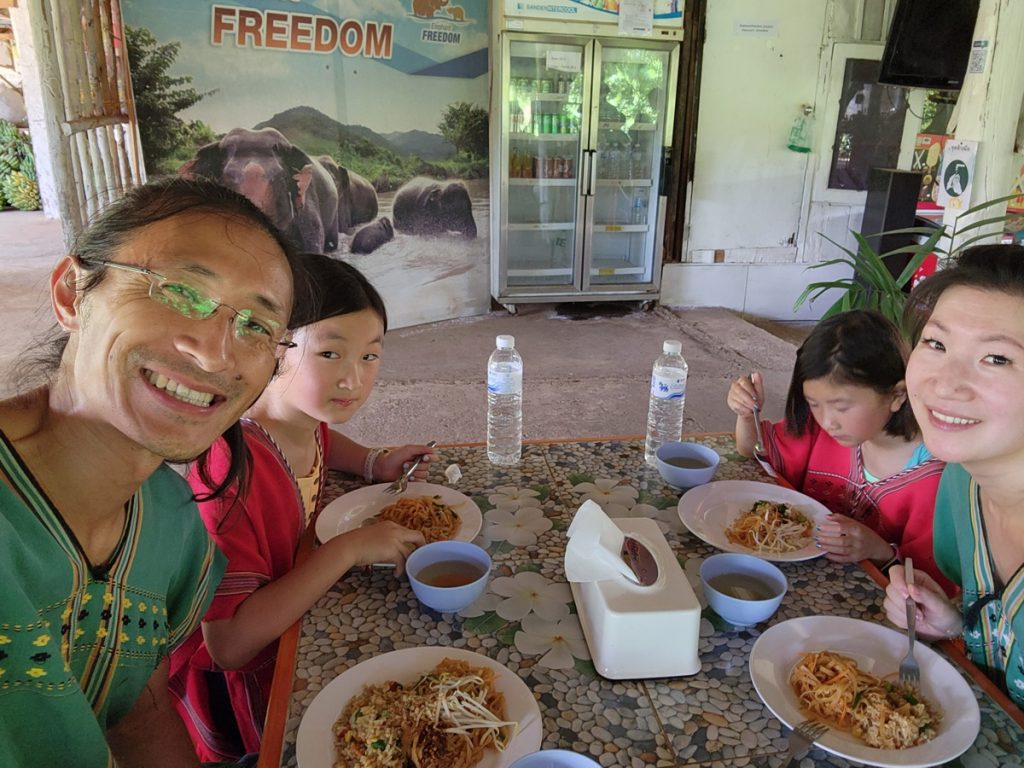

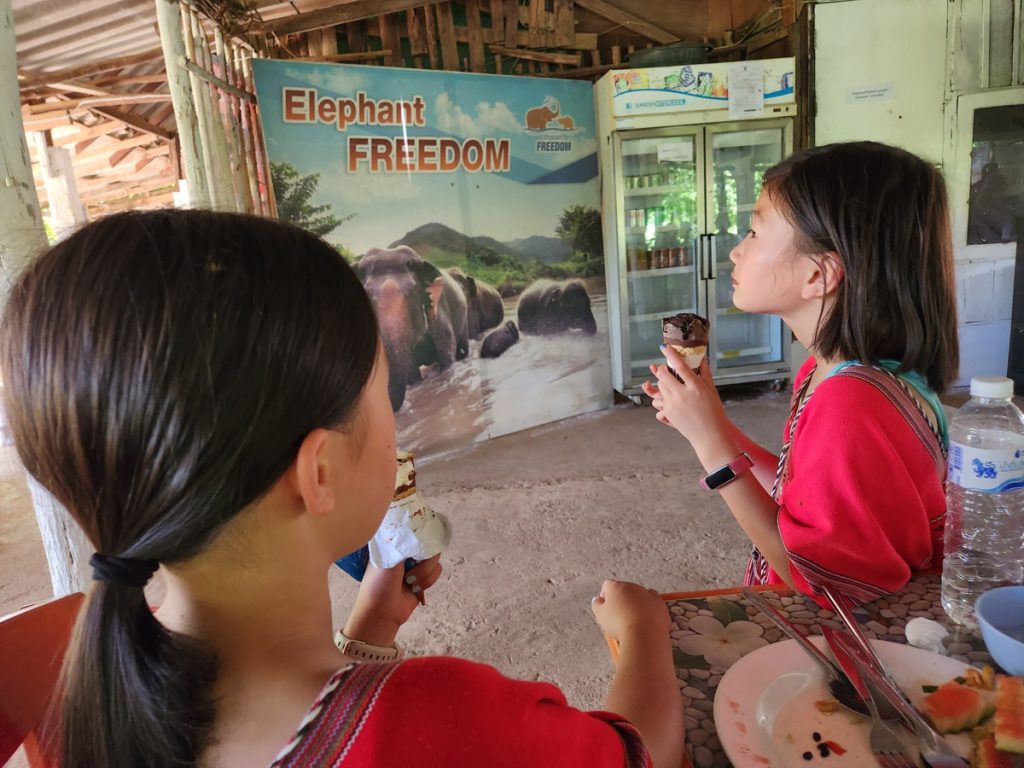
Dietary Supplements (for elephants)
After lunch, the guide took us on a “cooking class” making vitamin balls out of rice (powder, cooked sticky rice, and husk), tamarind, peppercorn, salt, and bananas. They were supposed to be crucially important dietary supplements for the elephants’ digestive health, and it was repeatedly emphasized that an elephant can die if constipated for three days.
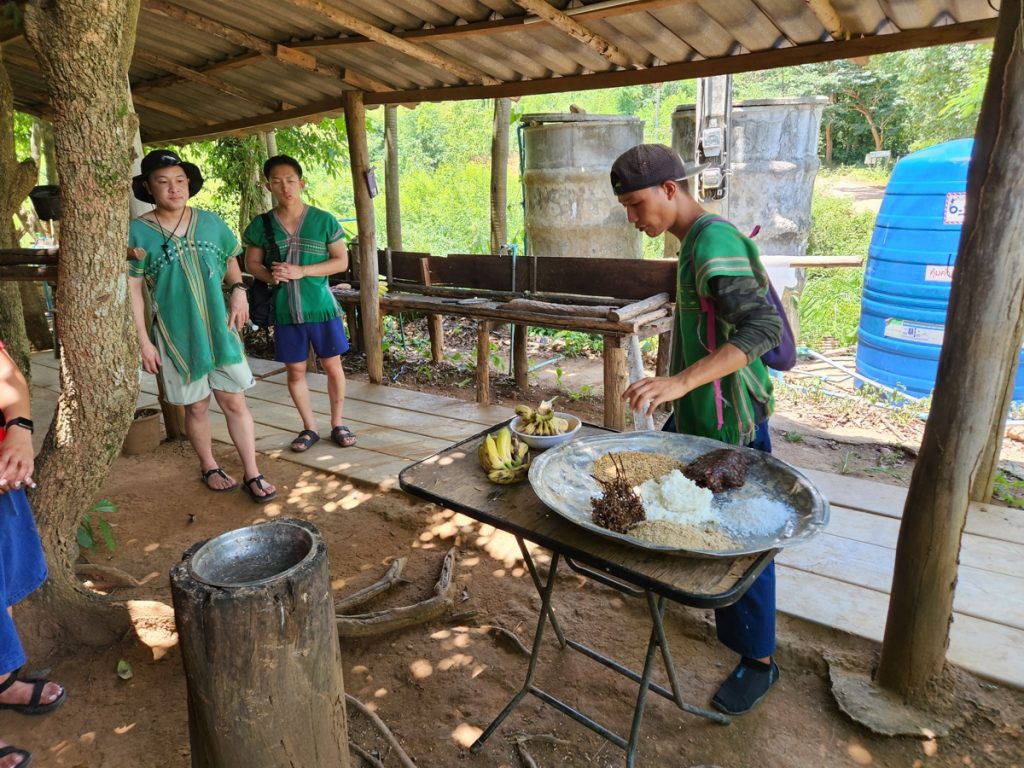
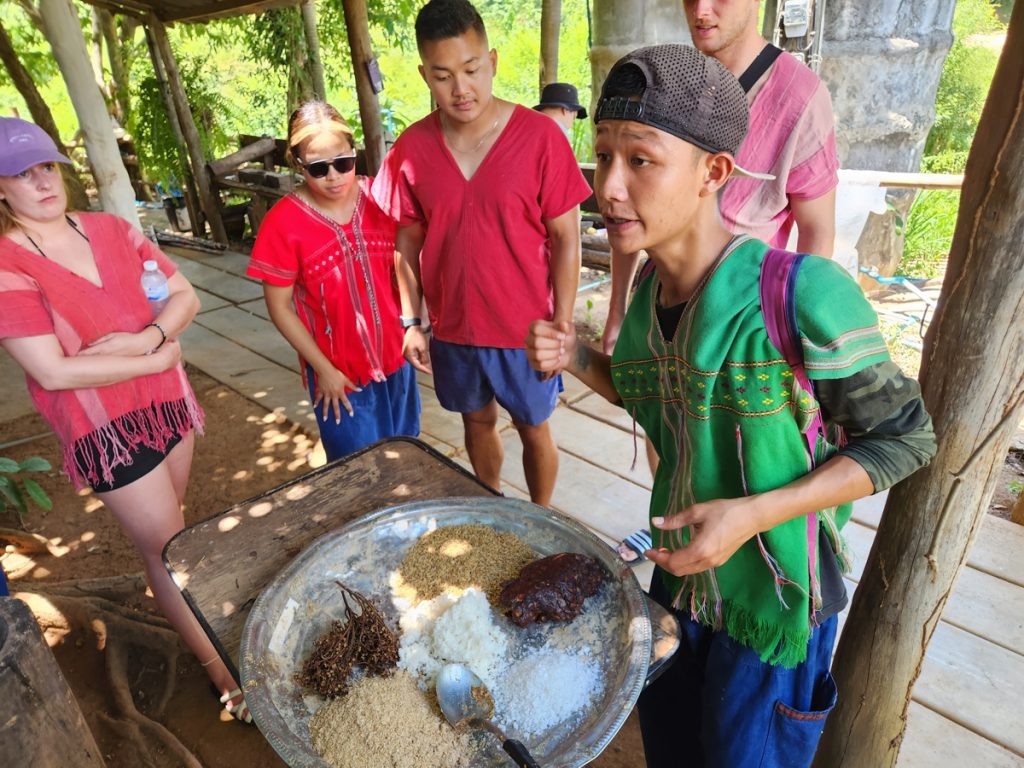
Time to get hands dirty again!
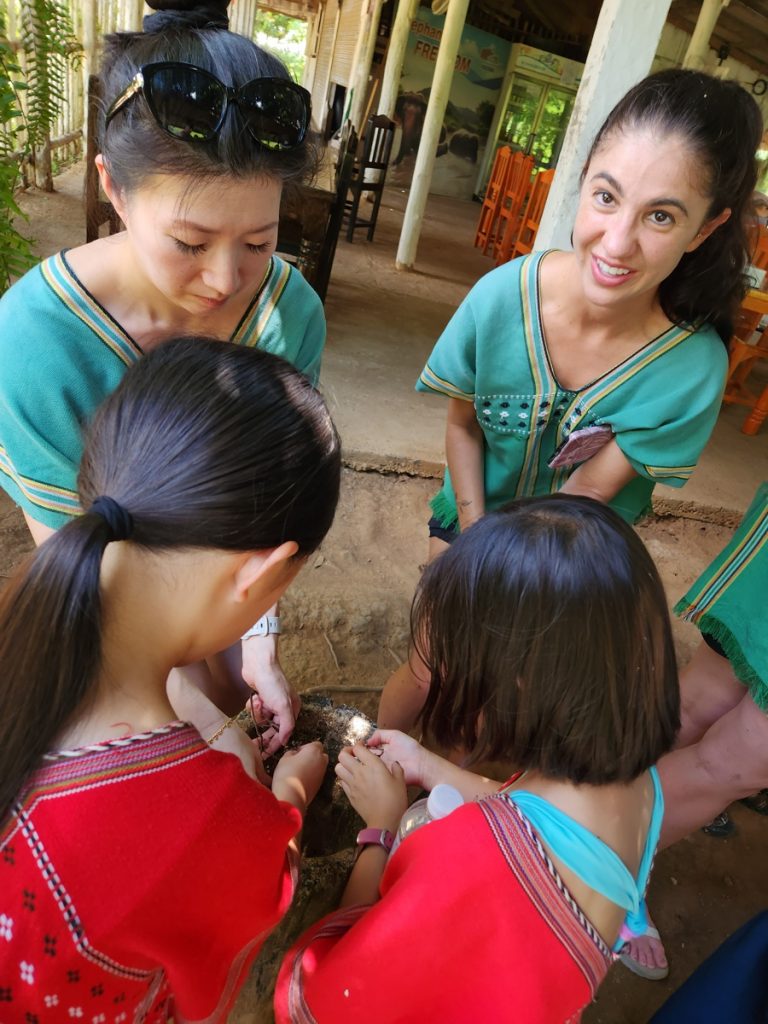
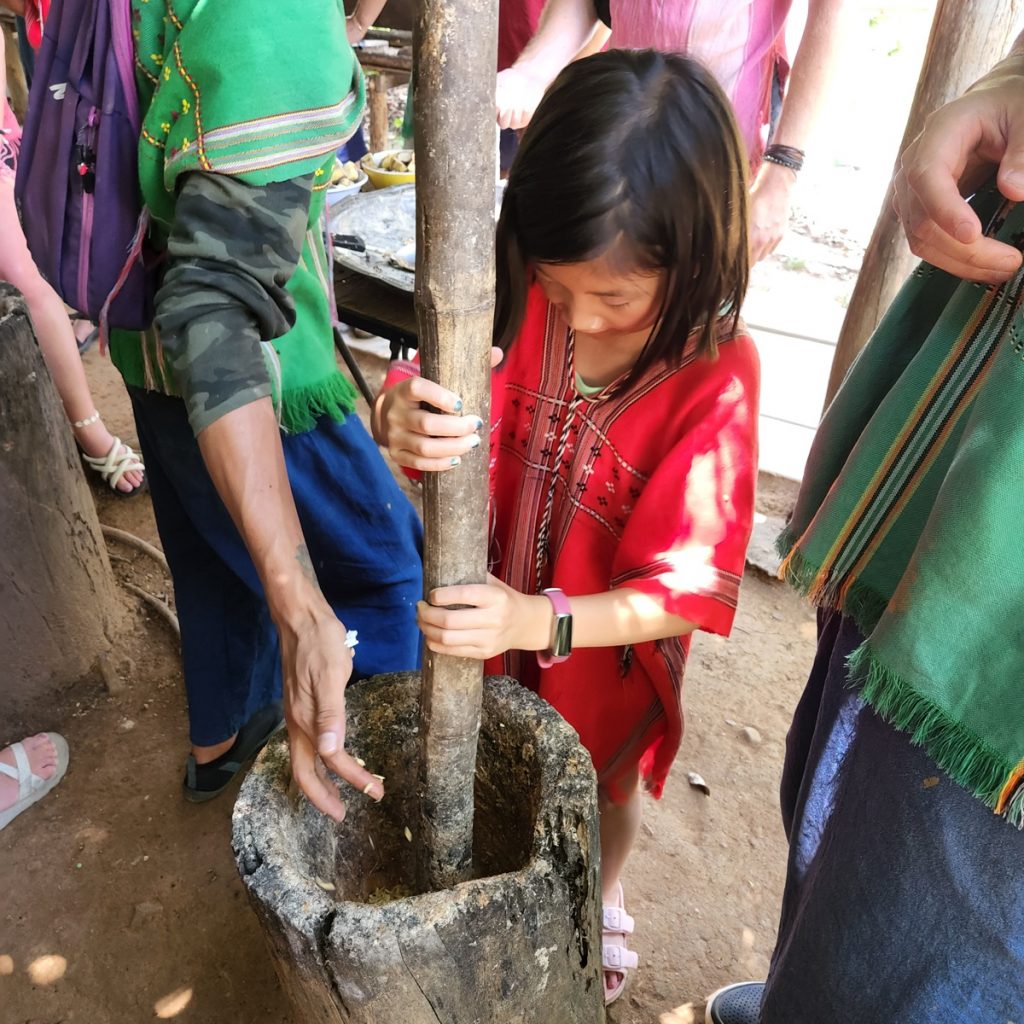
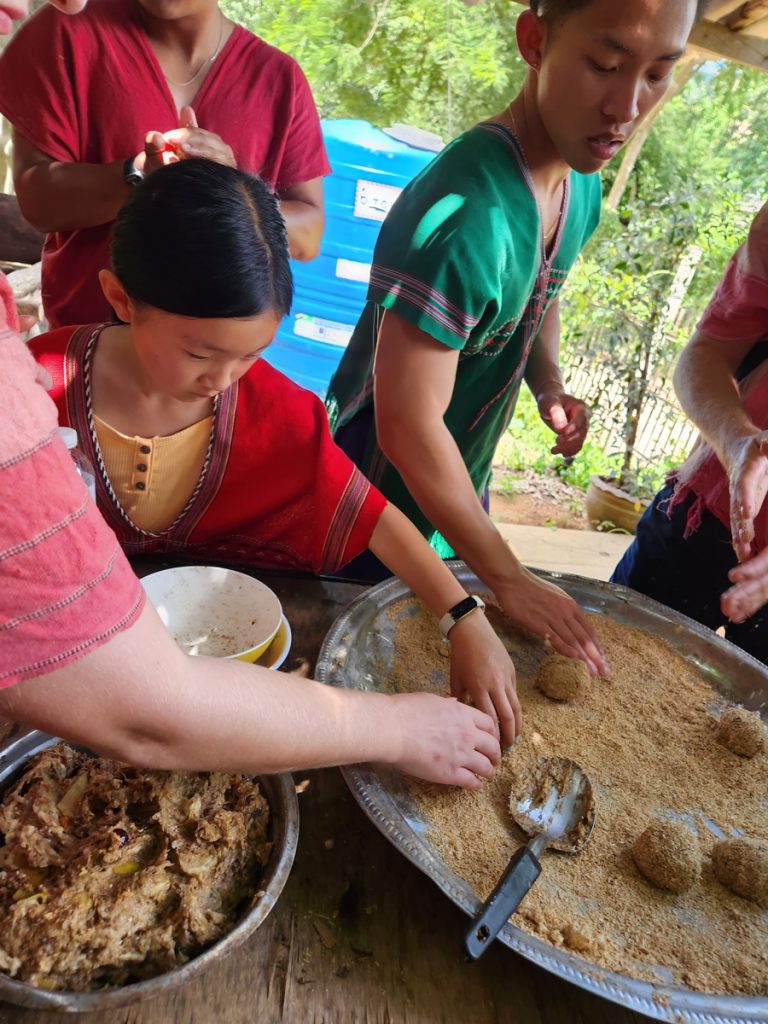

I was skeptical of the practice, considering how dietary supplements in the human world are mostly a scammy business, and that tourists drawn to “ethical” elephant “sanctuaries” are quite likely target consumers for vitamins and nutrition shakes. Nevertheless, it was fun to work with the rustic mortar and pestle and then to roll out a full tray of mochi-like balls. And nobody ever gets tired of another excuse to feed the elephants.

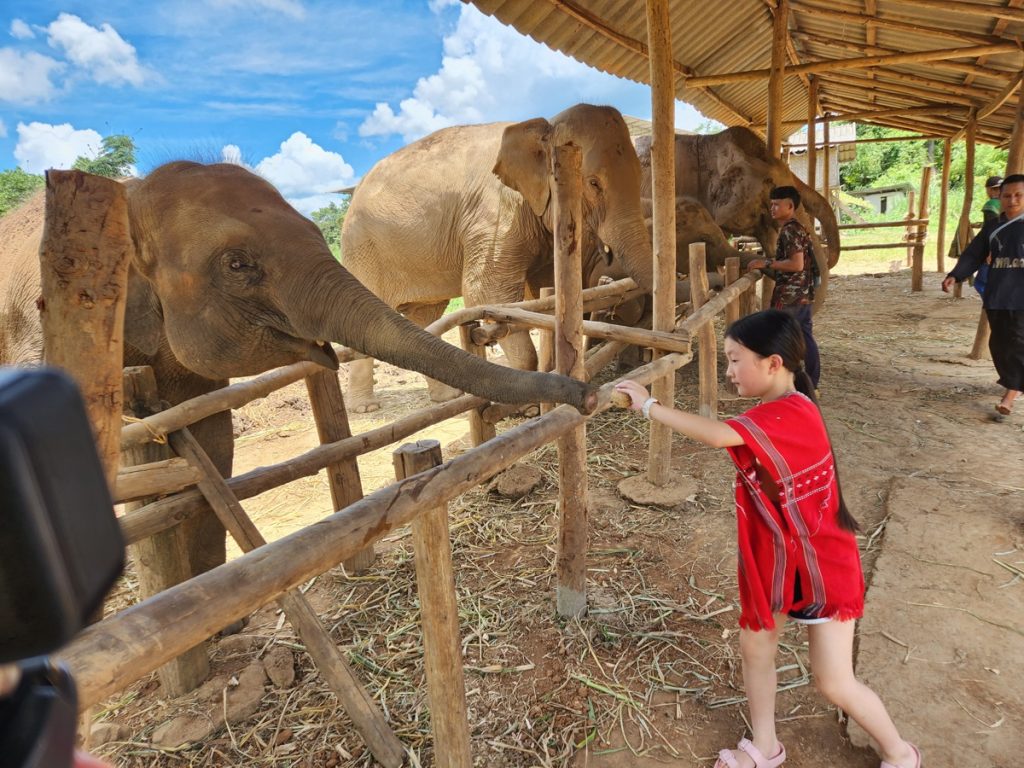

Afternoon Walk
After the vitamin balls, we went on a more extensive hike through the wilderness. It was an easy walk aside from the shade-less-ness in the afternoon sun, the humidity, and the occasional river crossing. The awe from walking in a single file and then seeing a couple elephants approaching at speed from behind made it more than worth it, though.
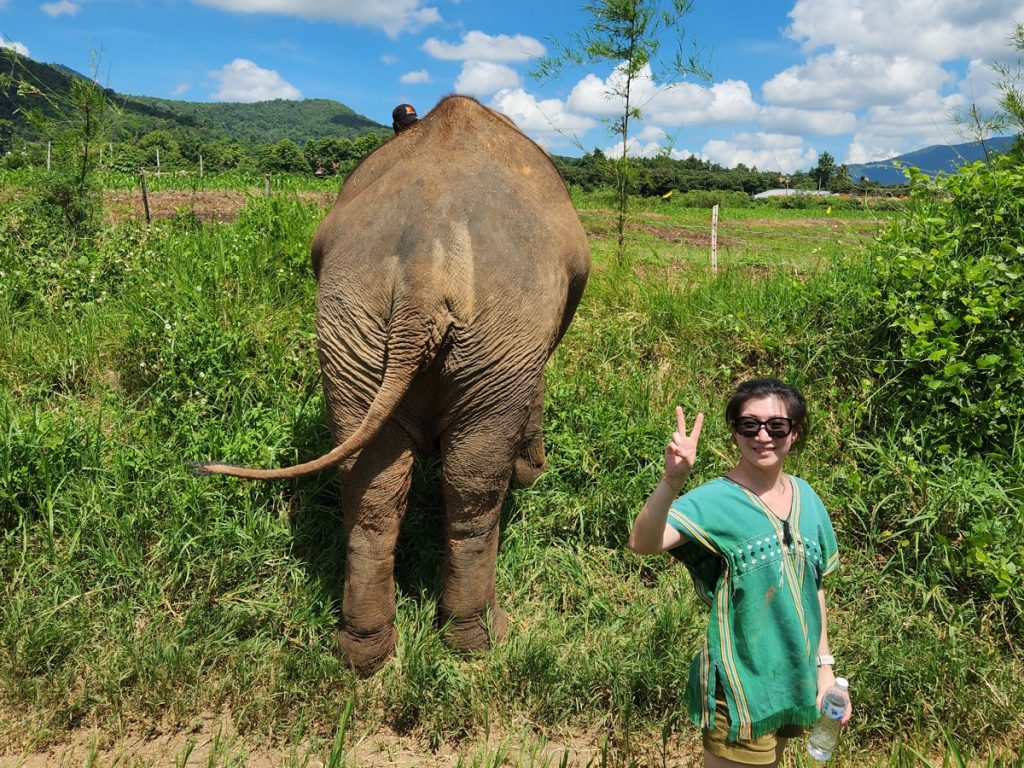

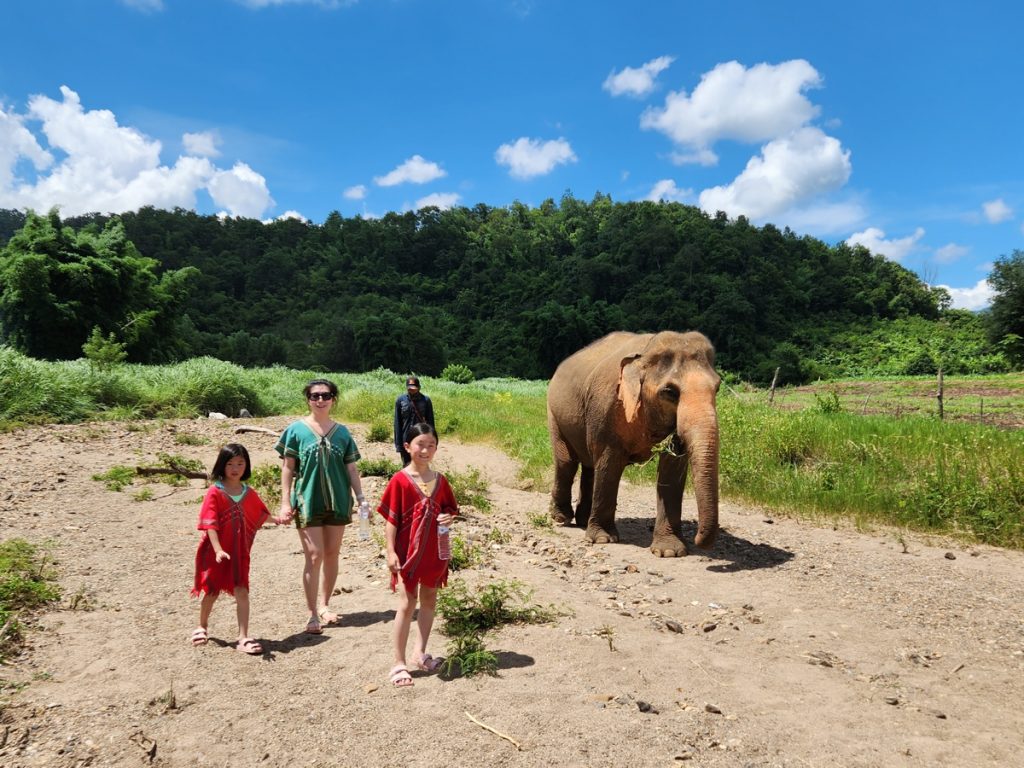
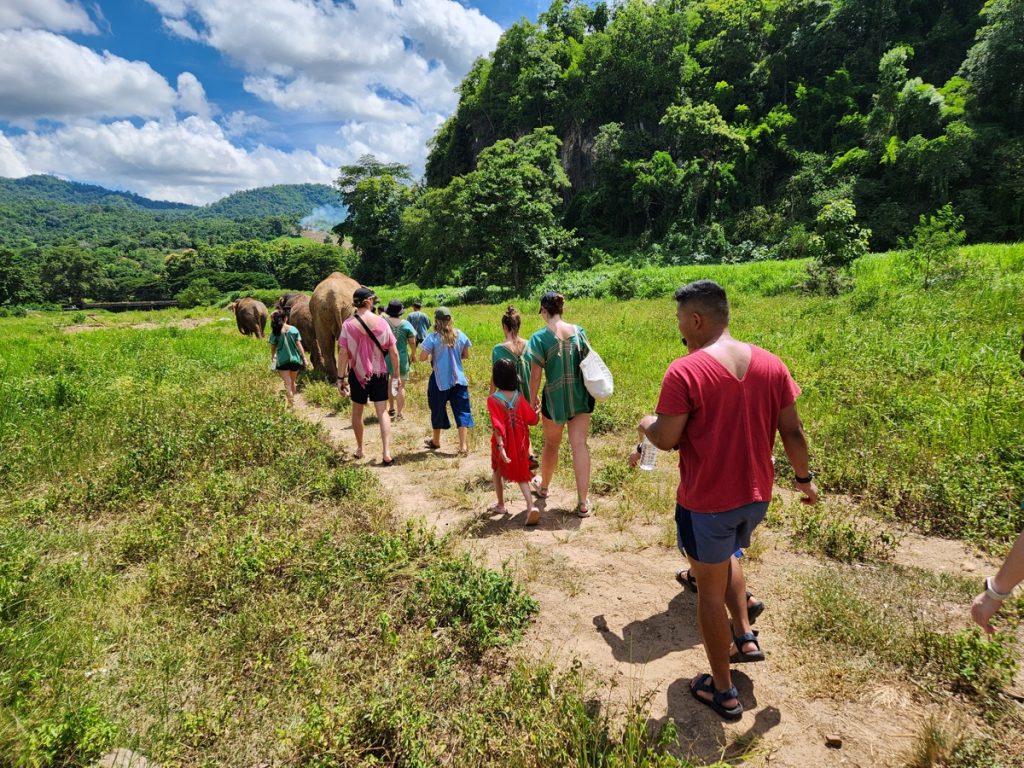
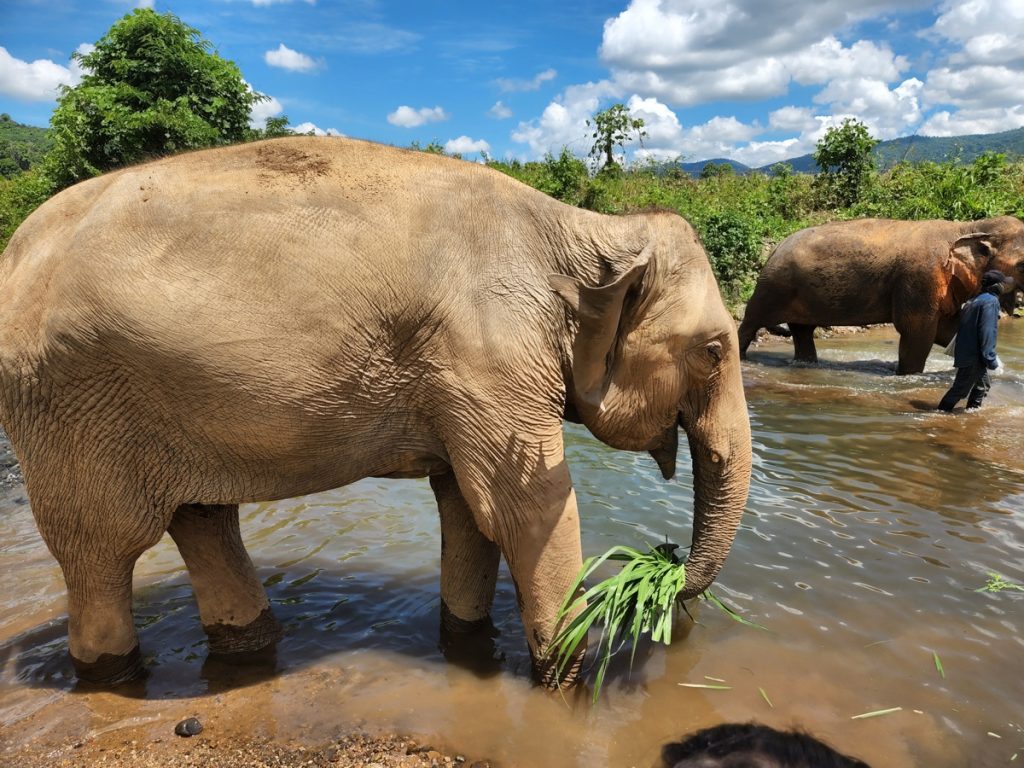
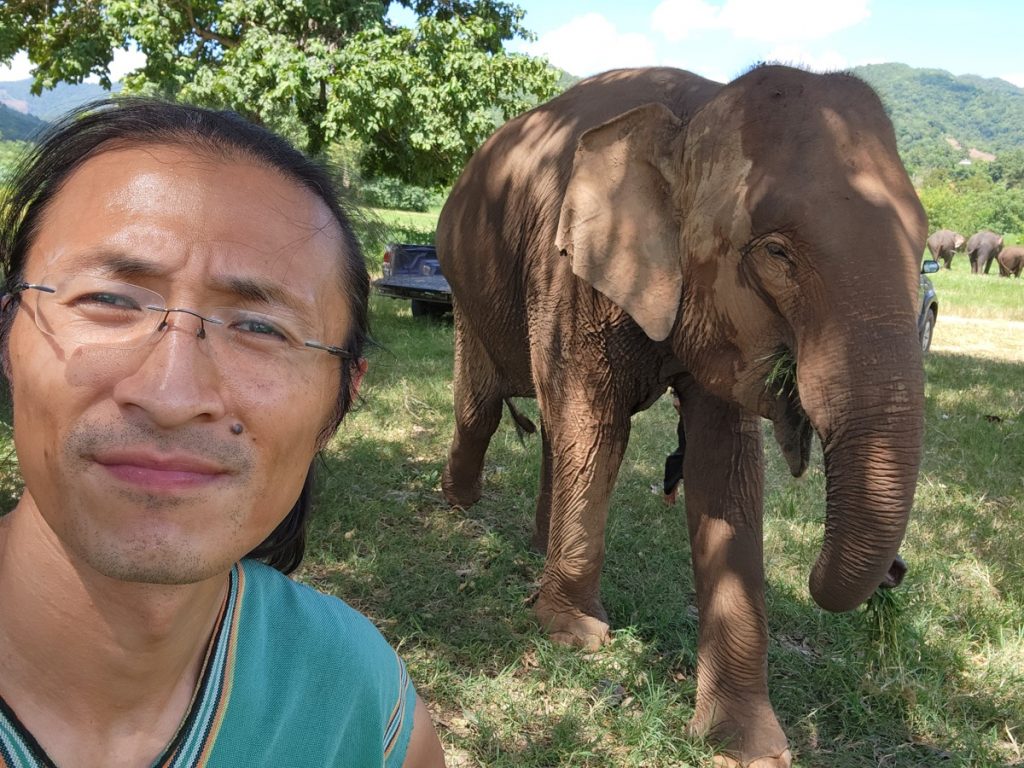
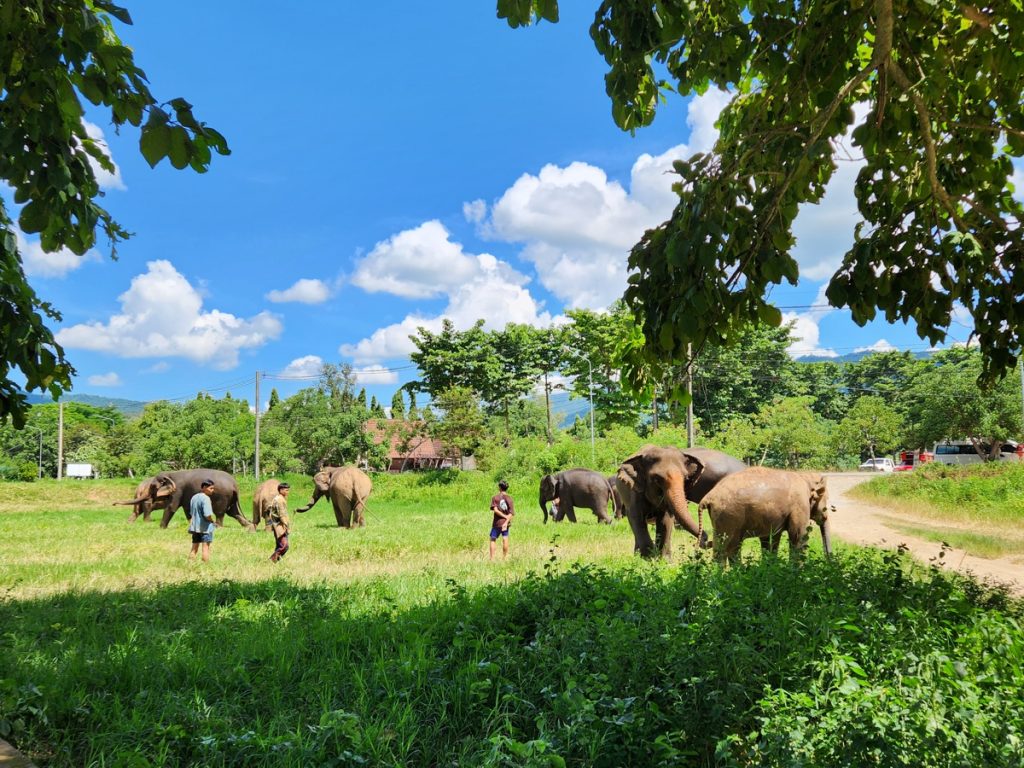
At the end of the walk, we came across another herd of elephants and witnessed some social interactions. We also walked by a few poor cows on leashes, whose presence the elephants did not appreciate. The herd growling at the cows was a deep bass that shook the ground.
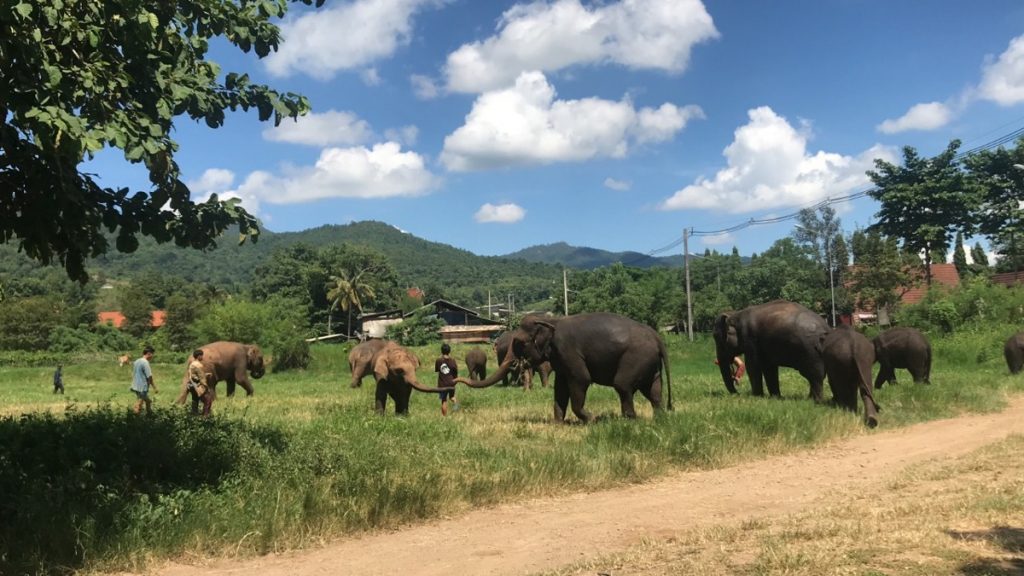
The River
The highlight of the day was bath time… the gimmick that most elephant sanctuaries prominently featured in their marketing materials. The elephants got in a knee-deep stretch of river to cool down, and tourists snapped Instagram money shots while dumping water from buckets to “bathe” their newfound giant friends.
I would assume that us “helping” elephants bathe was as useful and welcome as toddlers “helping” their parents do anything: likely counterproductive and required additional patience and restraint from the recipient of such help. But heck, it was so cool and we gleefully joined in on the action.
The best (?) part was when I found the baby lying down in the water and approached her. She reached her trunk forward between my legs, which I thought was a cute cuddly gesture. Then she grabbed onto my left leg, which was both a lovely act of intimacy and a horrifying encounter of force. I could not pull my leg back or even stand still… this 3-year-old was a bit shorter than me and yet I was powerless against her. Then when she loosened the trunk and grabbed my leg with her leg, I thought I was about to drown in this shallow body of water. It was like playing tug-of-war with a truck. My foot scratched against the sharp river rocks. One of the trainers intervened so the episode ended quickly, but in those few seconds was an intense overload of senses and thoughts.
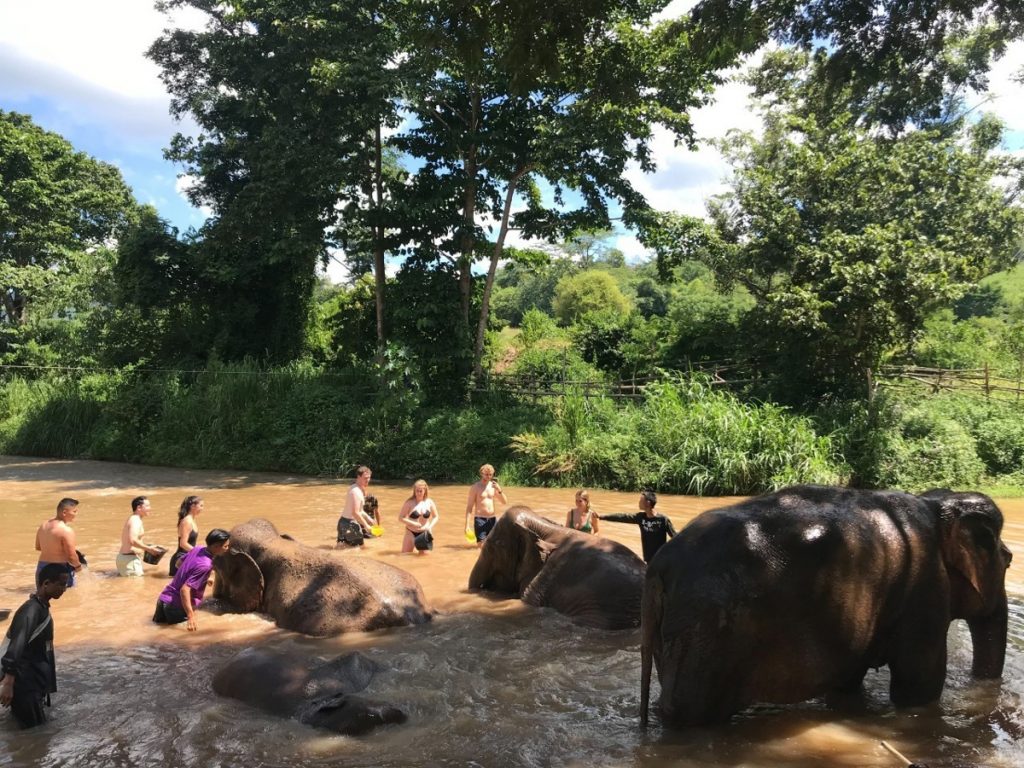
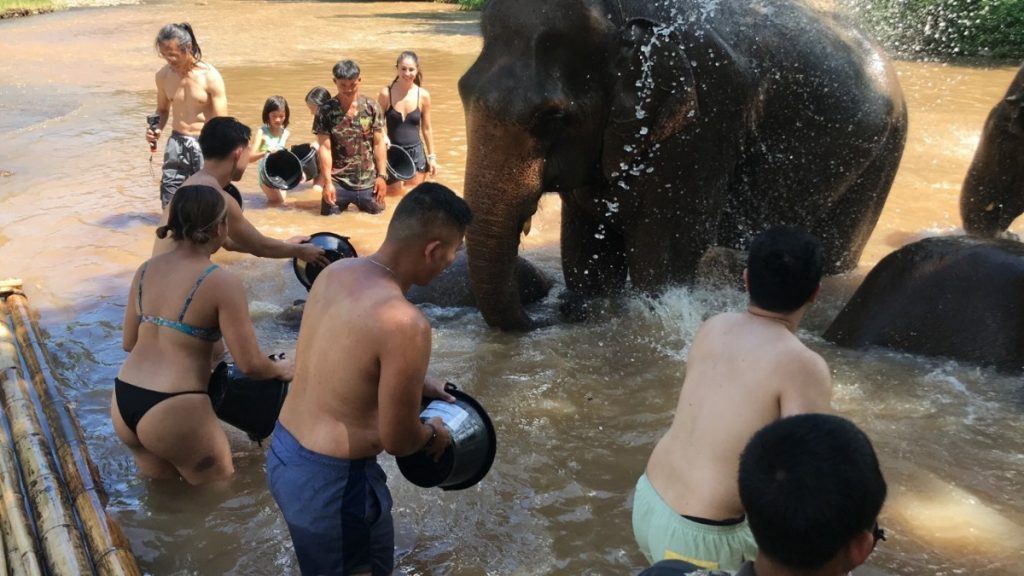
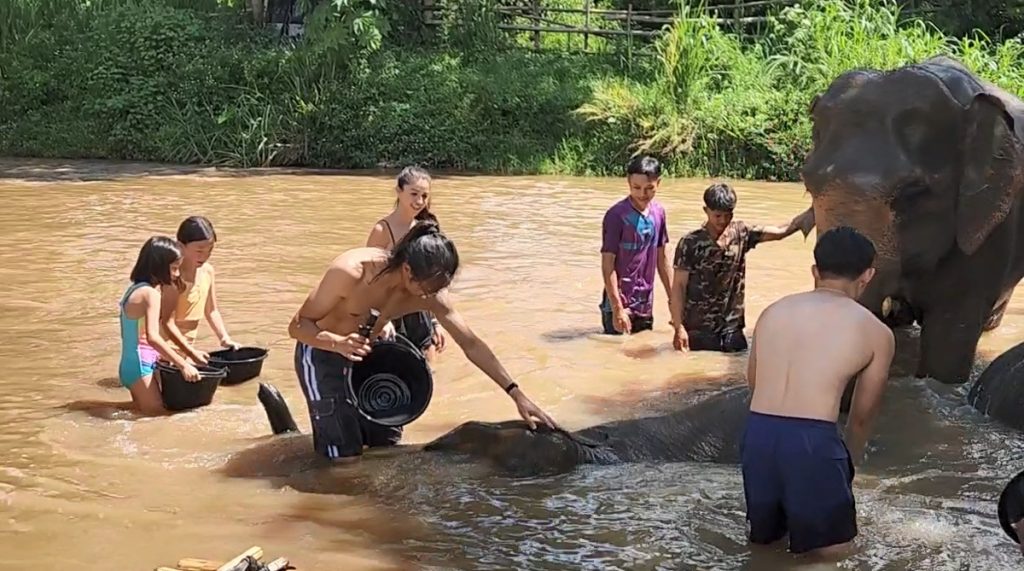
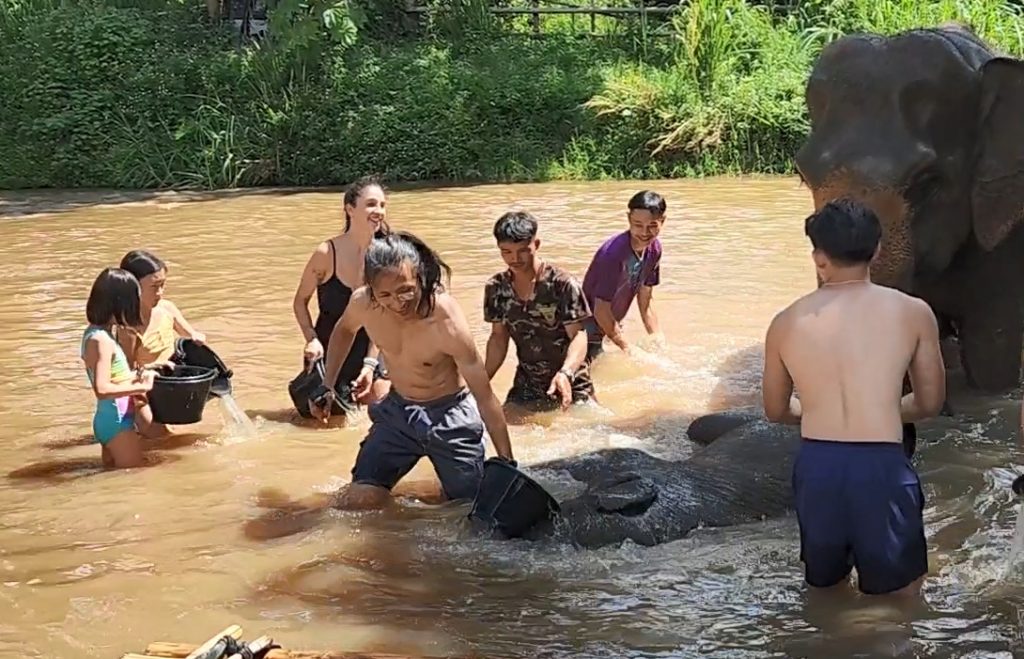
The Waterfall
After the few minutes soaking in the river, the tour group separated from the elephants and was taken to one of Mae Wang’s waterfalls. I didn’t see the point in spending 1.5 hours of our “full day elephant tour” on this, but others seemed to enjoy it. My favorite part was finally getting to ride on the back of a pickup truck.
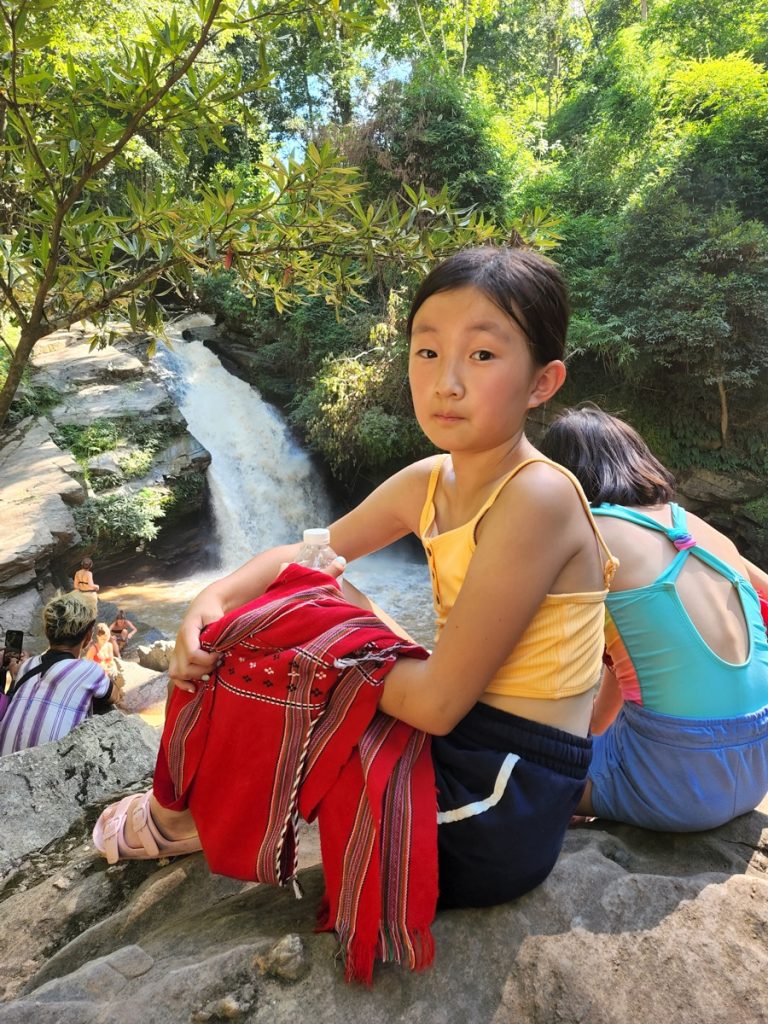
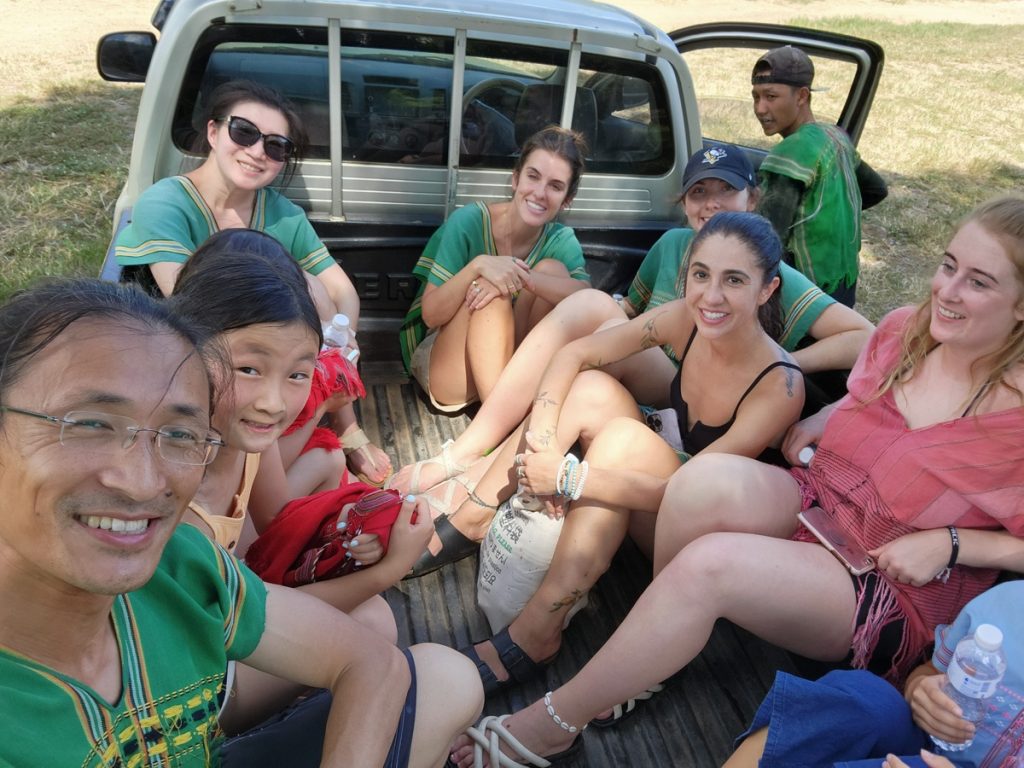
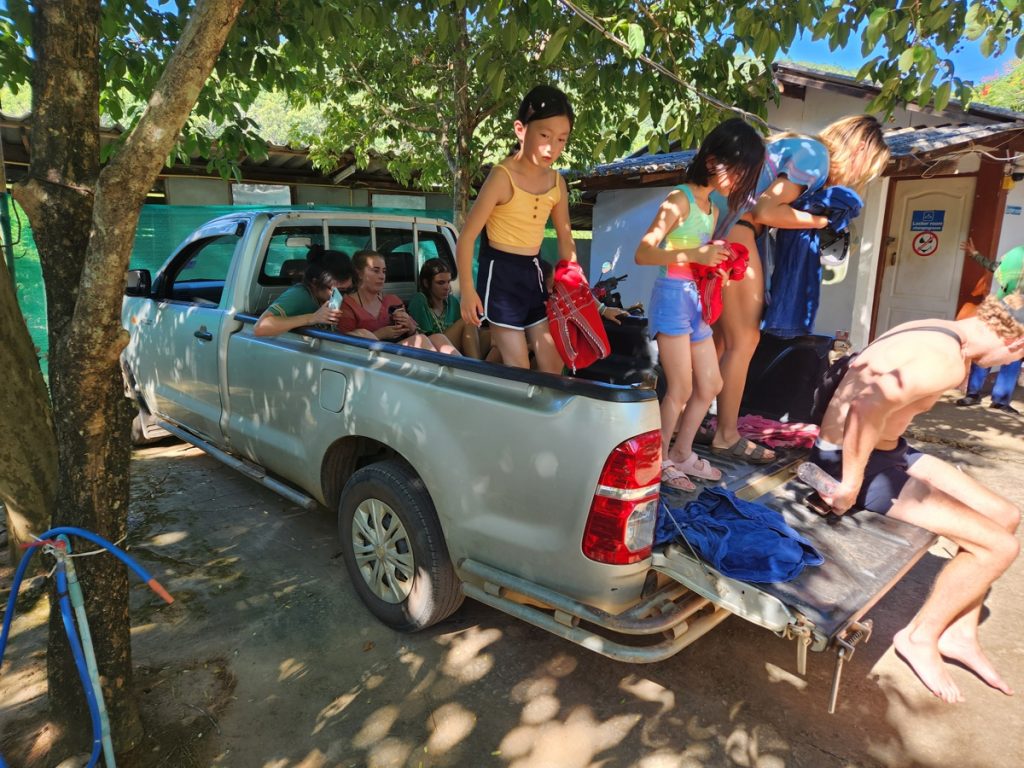
The Goodbye
What everyone agreed to be an incredible life-changing experience concluded at 4:30, and the van took us back to the hotel before 6. Before departing, we had our last opportunity to hand over some bananas to these lovely elephants.
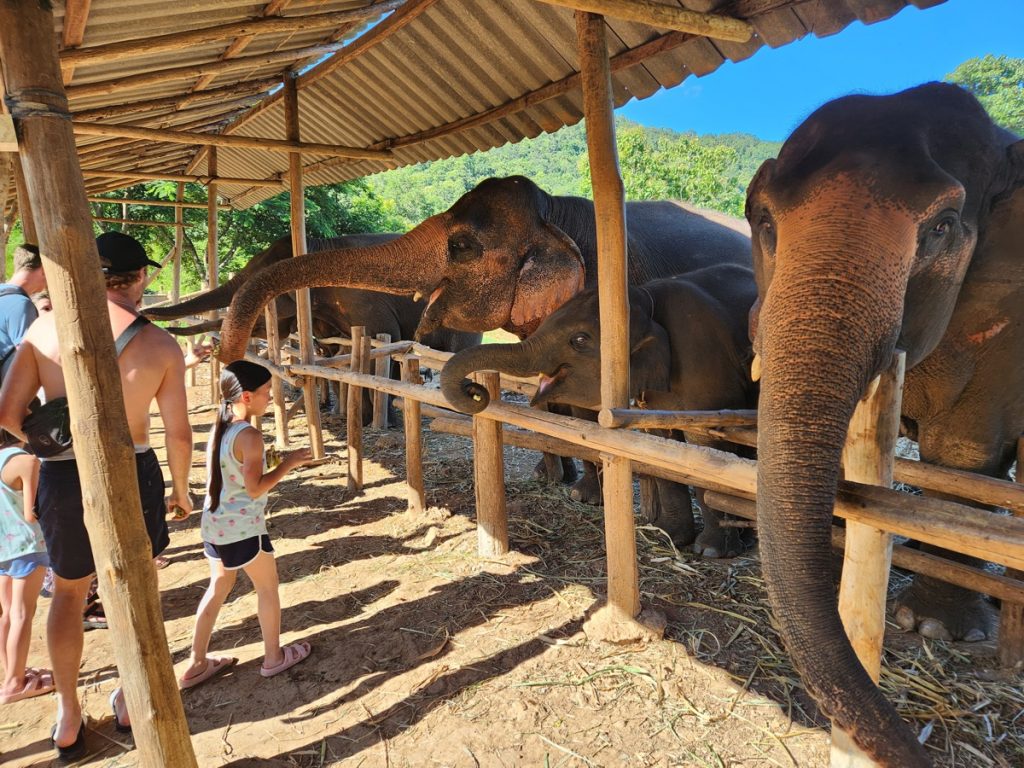
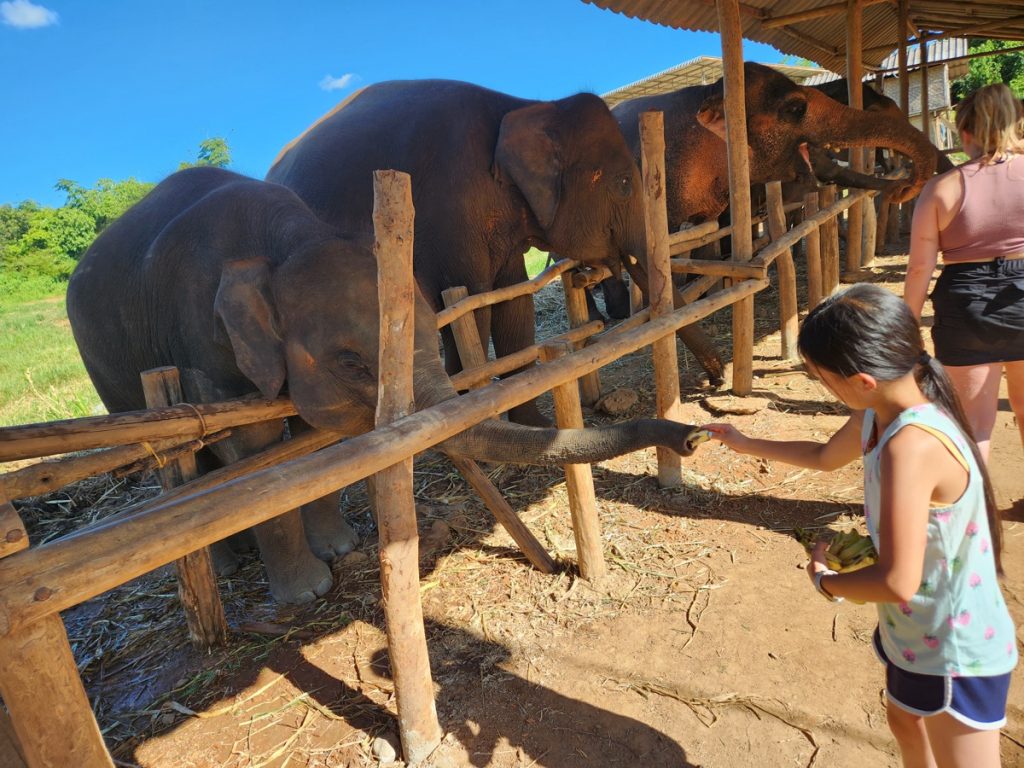
Reflection
When I was younger, all the hype around tourism in Thailand had to do with riding elephants or watching them perform circus tricks. I certainly was jealous when seeing the photo of Mah and Sis doing it. But then that fell out of fashion and is largely seen as animal cruelty these days.
Concurrent with the downfall of elephant rides came the rise of elephant sanctuaries, such as the one we visited. The premise was that retired and previously abused elephants now lived in a natural environment with people providing care, and they were free to roam around doing things elephants do. Visitors could visit by paying to financially support the operation of these sanctuaries, and interact with the elephants in a un-imposing manner. Win-win, right? Blog posts were written to decry elephant riding as the most ungodly sin, and portray their visits to the sanctuary as an act of charity.
Of course, things tend not to be so black and white. Our guide went of his way to reject the claim that elephant riding was categorically bad. While not the most loving thing humans can do, he said, it was far less harmful to elephants than having them pull logs, a primary occupation of domesticated Thai elephants in recent history. Thus an elephant moving from logging to tourism in the decades past would have been getting a net upgrade in life. On the other hand, I read a bit into this topic and learned that in order to safely interact with visitors (such as eating from their hands), elephants had to be trained. Is it terrible? Probably not. But methods vary and the practice isn’t immune from abuse.
As such, Elephant Nature Park (ENP), the most established and widely regarded to be the most ethical elephant sanctuary, does not allow visitors to physically interact with their elephants at all. The experience is presumably somewhere between a safari and a zoo, and those animals were truly free to do their own animal things. It was on our list for consideration, but I ultimately caved in to the more “fun” itineraries and chose an interactive tour. To balance that selfish desire with a sense of obligation, I decided to go with Elephant Freedom Project, reportedly an affiliate with ENP and presumably with high standards.
Unless enough wealthy people adopt them all as pets, in this human-dominated world, these domesticated elephants gotta do something of economic value in exchange for food, shelter, and care. That something may not be their natural preference, but neither is domesticating elephants natural to begin with. When we as tourists participate in this elephant economy, do we have an obligation to maximize welfare for them? Or is it better to maximize the value for ourselves as long as the elephant welfare is above minimum standards? Similar question extends to photographing Karen tribe (“long neck”) people, snorkeling in ecologically sensitive coral reefs, and visiting fragile historic cities such as Venice. Arguments against such tourism are easy to come by, but these people, animals, and relics certainly may benefit from tourism more than the alternative.
We can’t travel without leaving a carbon footprint. For this day of elephants, I wouldn’t pretend it was for the well being of animals instead of our own amusement. However, given the options out there, I hope we picked one that was as close to a mutually beneficial exchange as possible.
Southeast Asia 2023 – Index
- Kicking Off 15 Intensely Fun Days in Thailand and Singapore
- Attempting the Thai Language
- Modes of Transportation
- Bangkok: Grand Hyatt Erawan
- Bangkok: Itinerary 1
- Bangkok: Itinerary 2
- Bangkok: Malls
- Overnight Train to Chiang Mai
- Chiang Mai: Itinerary
- Chiang Mai: Elephants!!!
- Chiang Rai: Itinerary
- Wats in Thailand
- Notable Eats in Thailand
- Singapore: Itinerary
- Singapore: Deja Vu
- Singapore: Changi Airport & Flight Home
- Notable Eats in Singapore
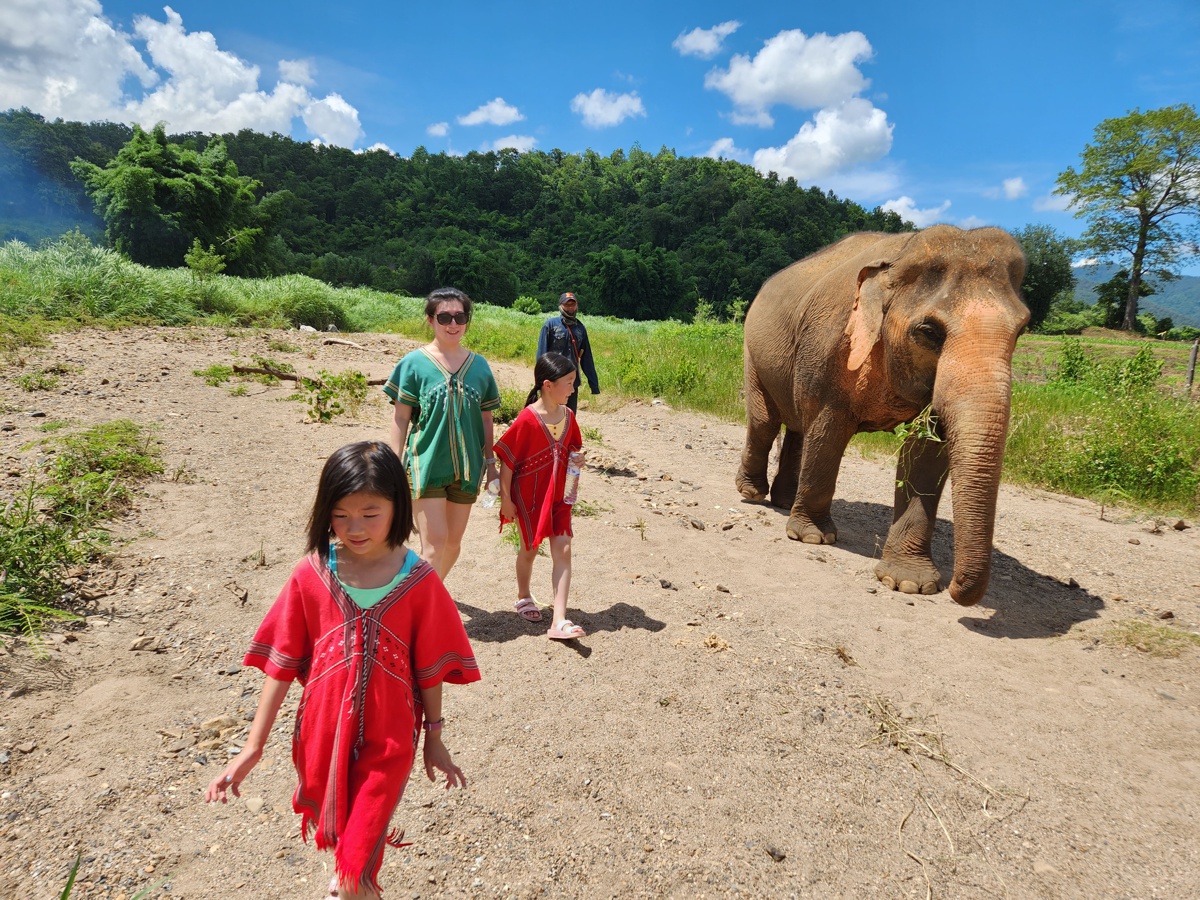
SEA 2023 (11/17) – Chiang Rai: Itinerary – Peter's Blog
August 20, 2023 at 3:23 am[…] Chiang Mai: Elephants!!! […]
SEA 2023 (14/17) – Singapore: Itinerary – Peter's Blog
August 21, 2023 at 8:56 pm[…] Chiang Mai: Elephants!!! […]
SEA 2023 (16/17) – Singapore: Changi Airport & Flight Home – Peter's Blog
August 21, 2023 at 11:50 pm[…] Chiang Mai: Elephants!!! […]